WOMEN’S FREEDOM RIDE 2023

YOUR SAY: SANTANDER E-BIKES
CHRISP STREET PROJECT
PEDAL TO THE PITCH
ROAD DANGER REDUCTION
CYCLE TOURING IN PUGLIA
MAGAZINE OF SPRING 2023
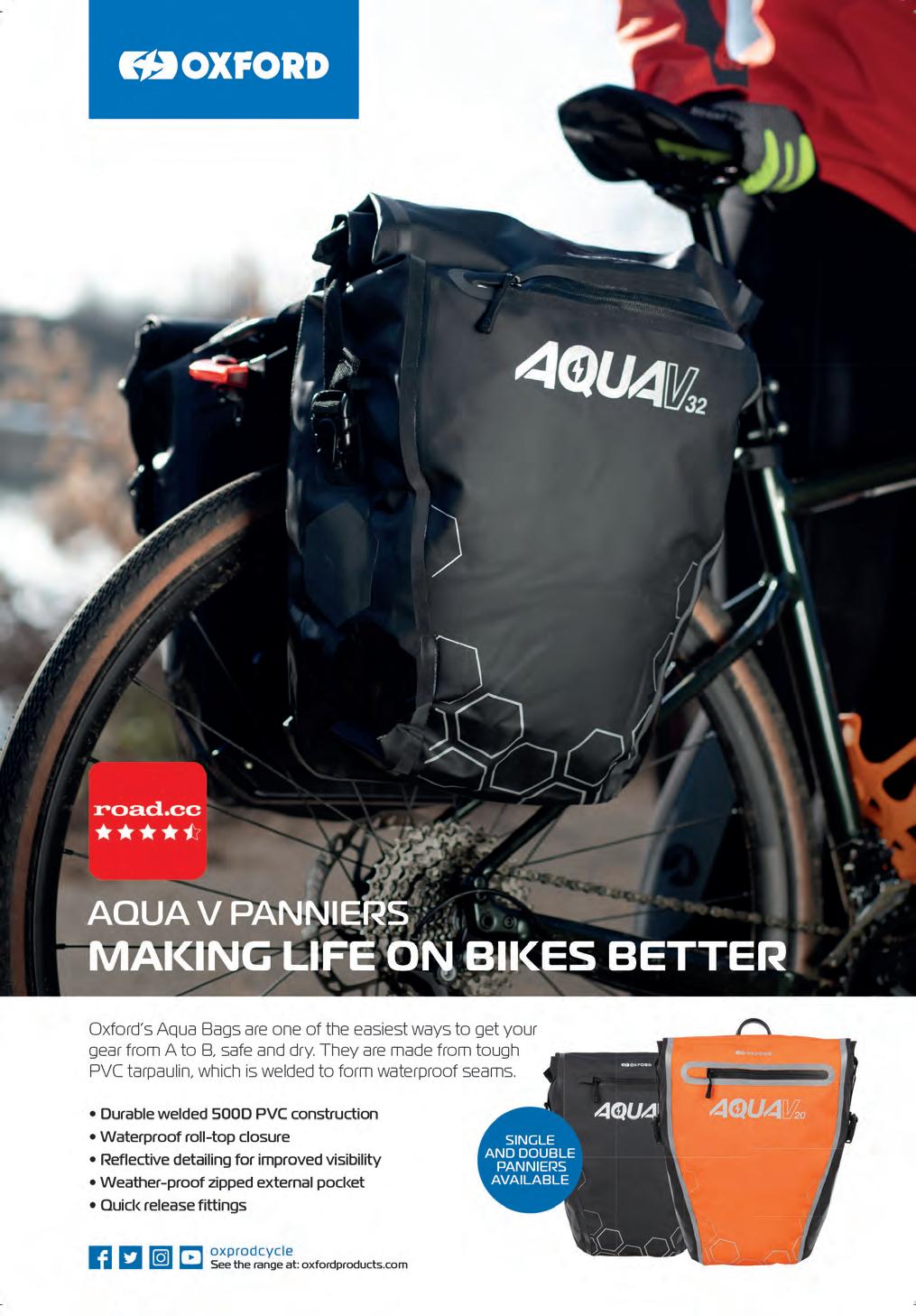
FEATURE > 20
WHEEL



We ask four Londoners about their experiences riding the new fleet of Santander hire e-bikes PEDAL TO THE PITCH, 48




ASHOK SINHA, OPINION, PAGE 9
CARLTON REID, OPINION, PAGE 12

Cycling delivers on multiple fronts: social, environmental and economic.
As Carlos Moreno said “the rhythm of the city should follow humans, not cars”.
LONDON CYCLIST Spring 2023 3 SPRING 2023 News | Features | London | Travel | Ride Guide 58 OST ‘MID-DRIVE’ e-bikes — where the motor is located at the bottom bracket — are powered by pretty hefty motors from the ‘big four’ of Bosch, Brose, Shimano and Yamaha (though Bafang is also making an impression). Not only do they supply real pedal-assist punch, but they are also, unsurprisingly, heavy. Enter Specialized’s own SL1.1 mid-drive design — actually developed in partnership with automotive engineers Mahle — with a stated motor weight of just 1.95kg. To put that into context, most Bosch mid-drives sit at around the 3kg (6.6lb) mark. the same hillclimbing torque as the bigger motors (though its 30Nm puts it in the same ballpark as Bosch’s much heavier, entry-level Active Line). But being a lighter, more discreet unit it’s perfectly suited to sportier e-bikes like the Turbo Vado SL range. Fully kitted out, this commuter weighs only 17kg. And that is hugely noticeable M when riding and also when lifting the bike up steps or over obstacles. e clean, minimalist lines almost disguise the excellent hardwired LED lighting, plus you get a kickstand, full-length mudguards and rear rack included. e only real downside in practical terms is that the 320Wh battery is only removable in a workshop and not intended to be taken out for daily charging. Everything looks sleek but functional, from the simple toptube battery capacity display and small handlebar-mounted power level buttons, to the neat rack/mudguard integration. On the road the Vado SL’s power delivery is very impressive — super smooth and quiet in lower levels Review: Richard Peace A fully-equipped, high quality, more budget-friendly performer from Specialized’s superlight range of e-bikes NEW E-BIKES HOT TECH SPECIALIZED TURBO VADO SL 4.0 EQ ■ £2,900 ■ specialized.com BIKES GRAVEL TYRES The combination of light weight, fast rolling and all-weather performance makes the latest gravel tyres a solid pick for on and off-road adventures FEW OF US ride solely on the road — it’s common for sections of towpath, riverside trail, woodland track or broken byway to feature on many commutes, let alone our weekend explorations. And while bombproof ‘touring’ treads like Schwalbe’s Marathon Plus can cope with most eventualities, they’re undeniably heavy — often 1lb (440g) more per tyre than those featured here — and considerably slower than performance rubber. Hence the growing popularity of this relatively new category of all-round ‘gravel’ tyres. label might hint at pure off-road use, but these tyres are designed with low-profile central tread patterns for speed on the hardpack, and improved grip in wet or sub-optimal conditions. ey’re well armoured too (see below). #1 CONTINENTAL TERRA TRAIL ■ Sizes: 700x35, 700x40, 700x45 (tested), 650Bx47 ■ Weight: 535g So new that the website hadn’t been updated as we went to press, the new Terra Trails in 45c width come with Shieldwall casing protection and are tubeless ready if you want to ditch the inner tubes. The hexagon-shaped knobbles are wider spaced than others here, which meant they proved the most assured on the muddy sections of the Thames Path this winter. Also in brown sidewall option (495g). ■ conti-tyres.co.uk; £42.45 #2 HALO RXR ROAD PLUS ■ Sizes: 700x35, 650Bx47 (tested) ■ Weight: 525g The RXR’s minimalist design belies its abilities: it’s super nippy on the road, while it surpassed expectations on wet surfaces and gravelly parkland shortcuts. Get the pressure right and we found easier trails are more than feasible too. As a nice bonus, each tyre comes with free frame strap. ■ ison-distribution.co.uk; £59.99 #3 KENDA FLINTRIDGE PRO ■ Sizes: 700x35, 700x40 (tested) ■ Weight: 500g With a smooth centreline and small, tightly-packed knobbles, the Flintridge felt fast and most at home on broken roads and in the dry; mud was not its forte. The shoulder knobs held up well in aggressive turns though. Reflective sidewall patches are a great addition. ■ moorelarge.co.uk; £55 #4 PANARACER GRAVELKING SLICK+ ■ Sizes: 700x32, 700x35, 700x38 (tested), 27.5x 1.5, 27.5x1.75, 27.5 x 1.9 ■ Weight: 360g Available in two sidewall colours, this has been Panaracer’s best do-it-all tyre for years. It looks and rides like a slick, with only slight chevron tread visible on close-up, but the excellent puncture proofing means it can still handle rough stuff dozens of Downs Link rides and still no flats. Good as either a winter ‘training’ tyre or for burlier sportives. ■ panaracer.co.uk; £54.99 #5 PIRELLI CINTURATO GRAVEL H ■ Sizes: 700x35, 700x40 (tested), 700x45, 650Bx45 ■ Weight: 480g The H is the probably the most versatile of Pirelli’s 10-strong gravel tyre line-up, with its low, tightly-spaced knobs ideal on road and hardpack trails. Zero issues on flinty paths (albeit set up tubeless), we also found it to be one of the grippier compounds across the board. ■ extrauk.co.uk; £57.99 #6 SCHWALBE G-ONE OVERLAND ■ Sizes: 700x40, 700x45 (tested), 700x50 ■ Weight: 570g Billed as “the gravel tyre for commuters, adventurers and e-bikers”, this really did hit the all-round sweet spot for us. Quick rolling on roads/hardpack, stable in corners thanks to those edge blocks, and highly durable. Like modern take on touring tyre — at half the weight. ■ schwalbe.com; £64.99 RIDE GUIDE contents FEATURE > 14 LCC launches its Women’s Network and calls for more inclusivity and safer streets INTERVIEW > 26 We visit an east London project that’s encouraging more people to try cycling FEATURE > 32 How LCC’s campaigning is helping to reduce road danger from both drivers and lorries Photo: Gilder Kate/Flickr LONDON CYCLIST Spring 2023 RIDES SOUTH-WEST WILDS OF THE 37km (23 miles) BIKE TYPES: suitable for all bikes, 60% off-road. PIT STOPS: Kingston, Claygate, East Molesey. NB: Komoot shows parts of this route as ‘not permitted’ for cycling, but these are shared use paths on the ground. FACTFILE Regular ride guide Charlie Codrington heads west beyond the city fringes to discover the sort of quiet trails and hidden history that Londoners love IDDEN BEYOND the suburban sprawl of Surbiton is a surprisingly well-connected network of gravel paths that are easily accessible from all parts of the city — it’s an area just waiting to be explored. Have you ever wondered in which stream John Millais painted Ophelia? Why does Epsom have salts? What are those strange white-painted cast iron posts you see dotted in woods around the capital? And what is a massive horse’s head doing on Surrey hillside? Follow this ride from Kingston station and you’ll uncover a few answers. There’s a few hills, though nothing severe and the route’s suitable for all types of bikes, including hybrids. It can be busy in parts, especially at the start of the Barge Walk at Hampton Court, and there are few places you may have to get off and walk, but it’s a loop that can be ridden all year round and makes wonderful day out whatever the season. We have partnered with mapping specialist Komoot to bring you free downloadable route maps. Simply scan the QR code here to access the relevant page on your smartphone or tablet. 5 2 3 4 H RIDE 53
BIKES 58 PRODUCTS 60
TO THE HEEL, 38
EDITORIAL
Inspiring tales of the City
INTERNATIONAL WOMEN’S DAY is celebrated annually on 8 March, and this year LCC used the date as a launchpad for its new Women’s Network by holding a fun ride in central London that brought more than 1,000 women and their allies to the streets (see page 14). Far fewer women than men cycle regularly and, as countless research studies have shown, the single biggest barrier to growing those numbers is fear: fear of road danger. So the ride’s serious side saw a call for the Mayor to make cycling more inclusive by creating safer streets for cycling by 2030.
Things are improving, slowly, across town though, and news came in just before we went to press of how effective the City of London’s work in encouraging active travel has been. While walking remains the main way people move around there, people cycling now represent 40% of road traffic at peak times (and 27% throughout the day). That’s a stunning figure — let’s hope this inspires other boroughs to be more progressive with their own transport policies.
Finally, not wishing to end on a sad note, we want to send our best to the extended Look Mum No Hands family after the café closed its doors last month. We hosted and attended so many great events there over the last decade or so — fingers crossed we’ll see you back in some form before long. Happy cycling!
John Kitchiner Editor
LCC MEMBERS’ LEGAL HELPLINE
Osbornes Law is the official legal partner of LCC, providing members with exclusive access to a legal helpline. If you’re involved in a collision or have a cycling-related legal issue, phone the Cycling Team at Osbornes for advice on 020 7681 8672.
Cover image: Izzy Romilly
Location:
Women’s Freedom Ride, March 2022

LONDON CYCLIST
Unit 206, The Record Hall, 16-16A Baldwin’s Gardens, London EC1N 7RJ n 020 7234 9310
n lcc.org.uk
EDITORIAL
Editor: John Kitchiner (london.cyclist@lcc.org.uk)


Design: Anita Razak
Contributors: Simon Munk, Tom Bogdanowicz, Melanie Etherton, Toby Zeidler, Rob Eves, Katy Rodda, Ashok Sinha, Carlton Reid
ADVERTISING
Allie Gill (allie.gill@lcc.org.uk)
SOCIAL MEDIA
TWITTER: @london_cycling
FACEBOOK: @LondonCyclingCampaign
INSTAGRAM: @london_cycling_campaign
Editorial, copyright, membership
LCC is not aligned with any political party. All views expressed in London Cyclist are those of the authors and are not necessarily endorsed by the editor, nor do they necessarily reflect LCC policy. All material is copyrighted and may not be reproduced without the written permission of the editor. Editorial content is independent of advertising. All LCC membership offers and discounts are presented entirely at the discretion of the provider.
London Cyclist is published by LCC.
CAMPAIGNS: lcc.org.uk/campaigns
MEMBERSHIP: lcc.org.uk/membership
TO DONATE: lcc.org.uk/donate
LCC is a charitable limited company, reg no 1766411; charity no 1115789
London Cyclist is printed by Buxton Press on FSC carbon-balanced paper from responsible sources.
4 CONTENTS | Spring 2023
CBP0007421307115017

LAST CHANCE TO SUPPORT C9 IN CHISWICK
Take a minute to respond to the consultation on this key scheme to ensure it becomes a permanent fixture
In 2020, the hugely popular C9 Cycleway scheme was installed using an experimental traffic order. Now TfL is consulting on making it permanent or its removal. We urge you to support the former.

TfL’s consultation on the changes to Chiswick High Road in Hounslow closes 3 April. If you live, work or travel in the area, or have used the scheme or seen it in action, please do support it being made permanent.

This two-way cycle track is part of the C9 Cycleway route, with the next section west from Kew Bridge towards Brentford being built shortly, and with the route planned to stretch through Hounslow town centre and eventually to Heathrow. The eastern end is currently Olympia, via Hammersmith, but will, we hope, eventually connect via Kensington High Street to C3 and enable those cycling from west London to reach Tower Bridge, Stratford and beyond.
Thousands of people are already using C9 daily (there are regularly more bikes than cars, and it has the highest cycle counts of any outer London cycle track). However, some local
politicians and residents hate it. So we’re asking everyone who cycles, or wants to cycle there — or walks, shops, takes the bus, etc — to use our one-minute consultation response form to support the scheme.
What we think about the scheme…
The scheme itself is great — but there are issues worth highlighting. To the east in Hammersmith & Fulham side roads need better designs, and more filtering to cut ratruns from the A4. And we obviously want the scheme extended soon at both ends — to close the gap on Kensington High Street and to extend through Hounslow to connect Heathrow workers to the airport (we also want connections to destinations north and south off the scheme).
It’s up to you what you want to feed back on the proposals, but mainly it is important to get people supporting it because there’s a noisy minority determined to stop the scheme being made permanent.
n Take action in just one minute at: https://action.lcc.org.uk/c9chiswick
Busy from the off : C9 has the highest cycle counts in outer London
6
Photo: TfL
2023
Spring
NEW CYCLE SCHEMES ARRIVING ACROSS CITY
Funding from government to TfL for active travel may have taken a few months to result in actual construction works, but there’s plenty happening simultaneously right now, including:
n C4 Lower Road: at last, the ‘missing’ section that runs from Tower Bridge to Greenwich is underway.
n Lea Bridge Road: Hackney’s section of Lea Bridge Road has cycle tracks being built.
n C50 in Islington: work on 1km of cycle tracks along Seven Sisters Road from Holloway has started.
n Holborn: more construction is due around the Proctor Street and High Holborn junctions, to improve safety where Shatha Ali was killed.
n C9 extension: as well as the consultation (see left), construction is also incoming for the next phase of the route from Kew Bridge to Brentford. There’s also more schemes inbound, including the WembleyHarlesden one that’s long been awaited in Brent. Watch this space.
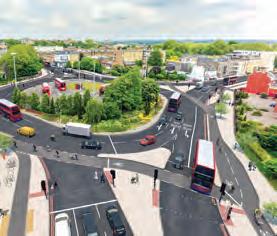
THE STATS
City of London cycling numbers
BUSINESS COALITIONS TO LOBBY FOR CHANGE AT KING’S CROSS AND HOLBORN

LCC is building coalitions of businesses based in and around Holborn and King’s Cross right now — we’re seeking support from local organisations to help tackle the dangerous junctions in both these areas, and transform them into better places for cycling and walking.

The outdated gyratory system at King’s Cross makes it one of the most dangerous sets of junctions in central London. And at Holborn — where LCC has held multiple protests in recent years following cyclist fatalities —we want a bolder approach that goes much further in calming motor traffic. LCC is calling on businesses to show their support in helping make their neighbourhoods more enjoyable places to live, work, shop and study. And safer locations for their employees, visitors and residents to walk and cycle.
LCC is continuing to push the Mayor, TfL and councils to make these urgent improvements. At King’s Cross and Holborn, which are both on LCC’s Dangerous Junctions list, support from local businesses and employers will be key to delivering the schemes needed. If you work in one of the areas and want your business to pledge support, you can contact us or find out more at:
n lcc.org.uk/holborn-coalition
n lcc.org.uk/kings-cross-coalition
LONDON CYCLIST Spring 2023 7 NEWS
NB: cyclist numbers are at 102% of pre-pandemic levels, while volumes of motorists are at 80% of what they were in 2019. 40 People cycling now represent this % of road users in peak hours, the highest transport mode. % While cyclist numbers have risen by this huge % during the same period (from 1999).
1999 the number of daily motorists in the City has fallen by this %.
this % of road users throughout the rest of the day.
386% Since
64% With
27%
(City of London report, 2023)

For good measure
IN THE last issue, I argued that a large-scale reduction in the roadspace devoted to car ownership (a different matter to car access, note) could release pent-up demand for cycling, regenerate urban biodiversity and defend against heatwaves. As anticipated, some people sniffed at my Panglossian tendencies, but others welcomed this attempt at ‘systems thinking’.
For what it’s worth, a recent, landmark study by former LCC trustee Professor Rachel Aldred and her team at the University of Westminster showed that average motor traffic was cut by almost 50% across 46 Low Traffic Neighbourhoods, with previous research showing a clear link between traffic reduction and more cycling. And a recent Lancet study claimed that doubling tree cover in European cities could cut summer heat-related deaths by 40%. So, what’s not to like about reprioritising even a moderate fraction of streetspace for living things, including those perambulating and pedalling?
Quite a lot, it would seem, judging by some of the truculent reactions to traffic-reduction measures almost wherever they are introduced. Which is why the GLA’s new Wellbeing & Sustainability
Measure is so interesting and potentially important. Billed as a direct challenge to the sanctified status of GDP (you can’t fault the hutzpah), this measure is designed to do a better job of capturing what truly is of value to Londoners, with the intention of increasing it. The time is ripe for such thinking. Academics like Professor Mariana Mazzucato at UCL have been challenging us to reimagine economic value since, well, forever, but you know the sands are shifting when the former governor of the Bank of England, Mark Carney, does the same (Reith Lectures, 2020).
A tool and indicator
Cycling — that is to say more of it by more people — is both a tool and an indicator. It’s a tool to deliver specific benefits to the individual (eg increased health) or to the environment (eg reduced pollutant emissions). It’s an indicator because the level of cycling in an area signals how healthy, green and attractive that area is in a general sense.

 Ashok Sinha Chief Executive of London Cycling Campaign
Ashok Sinha Chief Executive of London Cycling Campaign

So, what exactly is the GLA’s new measure? In essence it’s a rich combination of quantitative and qualitative data under these headings: Accessible services & safe neighbourhoods; Having a decent home; Belonging to communities; Being healthy; A clean & sustainable environment; Good employment & opportunities to succeed; Feeling financially secure. These baskets of data would then be refined into indicators and used to measure the effectiveness of public policy.
The problem with dealing with multiple indices like these, versus a single, money-based metric such as GDP, are obvious. But that’s no reason to sniff at it. Life is complex, and having enough money (essential as that is) is not the only thing that makes it worth living.
So well done to the Mayor for asking the GLA machine to set off in this direction. To be sure there is a long way to go before this measure has a noticeable impact on public life. I’m not holding out much hope for the contenders in next year’s mayoral election competing on the territory of wellbeing. But I hope everyone will eventually recognise that cycling delivers on multiple fronts: social, environmental and economic. Few things contribute better to wellbeing and sustainability overall, than being on a bike.
OPINION
Many aspects of life can’t be summed up by a single metric, says Ashok Sinha, so let’s try a new measure
“This GLA measure is designed to capture what truly is of value to Londonders”

Rail travails
WHY IS it so bloody difficult to take a bike on a train? These two methods of travel should be symbiotic, the perfect way of covering longer distances using a cycle. The problem is that the old days of guards’ vans at the back of every train offering plenty of storage space have long gone. Many trains now just have space for a couple of bikes and, to make matters more difficult, the rules vary between different operators. But there is some good news. For a start, cycle parking at stations has improved immeasurably in recent years and, quite often, it is in areas protected by CCTV. And on some services, taking a bike is easy. On nearly all the rail network in the south-east, including the London Overground, there are no restrictions except during the rush hour — but, again, these times do unfortunately vary somewhat according to the train company. Moreover, there is no need to reserve and you can just walk on to any train with your bike. When there is crowding, much depends on the guards on the particular service you’re using: some will help you squeeze on, others may be less helpful. Having said that, some trains, such as Thameslink, don’t have guards on them.
More good news is that charges for bikes were abolished years ago and, by and large, folding bikes can be taken at any time, though bizarrely a couple of companies — C2C and Stansted Express — say they must be carried in a bag. Doubt that is enforced much.
Storage nightmares

Now, the more complicated stuff. The rules for longer distance journeys vary according to the operator, but almost universally do require a booking. If you have not been able to book, you can hope that there are spaces available, but you risk being turned away. And the worst news is the terrible cycle spaces available on the new Hitachi express trains that run on the routes out of Paddington and Kings Cross.
This space has been deliberately designed as too short for leaningagainst-wall storage, and therefore you’re expected to lift up the front wheel to attach it to a hook. This is not only potentially damaging to your bike, but also impossible
for people who don’t train as weightlifters. Even I, with a 6ft frame and relatively light bike, find it tricky to manage. For my wife, along with many others, it’s a nonstarter. And if access for Disabled users is politely considered ‘tricky’ at the best of times, storing adapted cycles is nigh-on impossible.

Another pitfall is the dreaded ‘bus replacement service’. Invariably bikes are not allowed on, even when there is plenty of space in the luggage holds. Again, it can be discretionary and I was once saved from a 20-mile journey in the dark by a kindly coach driver. So always check that your train is actually a train before heading to a station.
In all this, the National Rail enquiries website is quite helpful, though at times vague and unduly pessimistic. Operators’ websites tend to be better, but again not always clear. But to leave the best bit of news until last, Scotrail has confirmed it is planning to install proper bike carriages on several routes. Already the first one, on the line from Glasgow out to Oban on the West Highland Line, is in service and others are due to follow.
n Christian’s latest book, Cathedrals of Steam: The story of London’s mainline railway stations, is out now (christianwolmar.co.uk).
OPINION
Christian Wolmar is an LCC Trustee and author of several transport-related books
Mixing train and cycle for longer trips should be simple, argues Christian Wolmar, but the reality is far from it
“Many trains now just have space for a couple of bikes and rules vary between operators”
Don’t fall for it
SQUINT AND a famous wartime map of London looks somewhat similar to a modern heatmap of Barcelona’s ‘superblocks’. That’s because Patrick Abercrombie’s ‘Greater London Plan’ of 1943 shows how London is a city of villages. And Barcelona’s superblocks are distinct neighbourhoods made more people-friendly by restricting car use. Both are compact urban zones with all amenities nearby — ‘15-minute cities’ in other words.

Bizarrely, the city of short distances urban planning model has become embroiled in the culture wars, attracting numerous cranks and not of the bicycle variety. To QAnon-types and other conspiracists, 15-minute cities are dystopian, climate-lockdown concentration camps with people electronically chained to their locality and fed on ground-up grasshoppers. I am not exaggerating.
A Tory MP recently told Parliament that, in effect, living close to shops was an “international socialist concept”. Yet, the same people also say the urban planning model is a nefarious, bug-eating plot from the bankers and ubercapitalists of the Switzerland-based World Economic Forum.
The professor who coined the term ‘15-minute city’ in 2015 at the
COP21 conference said that instead of being perfected for cars, cities “should be designed so that within the distance of a 15-minute walk or bike ride, people should be able to access work, housing, food, health, education, culture, and leisure”.
Carlos Moreno also said that the “rhythm of the city should follow humans, not cars” and that “neighbourhoods should be designed so that we can live, work and thrive in them without having to constantly commute elsewhere”. Who wouldn’t want to live within easy walking and cycling distance of shops, cafes, schools, theatres, and swimming pools? Seriously?
Ignore the lies
According to these conspiracy theories (which bubbled up after Covid lockdowns) the world’s elites want to eradicate cars and, instead, mandate bicycles for everybody. Chance would be a fine thing!
against 15-minute cities, and Canadian psychologist turned hard-right culture warrior Jordan Peterson tweeted that “idiot tyrannical bureaucrats [will] decide where you’re ‘allowed’ to drive”, as if city traffic departments have not done this very thing for at least the last hundred years.
Vaccine skeptic James Melville told his 425,000 Twitter followers that 15-minute cities would involve “urban incarceration”. Embedding a video shot in China of a Covidlockdown he said neighbourhoods would be “separated by a barbed wire fence. Anyone who wants to leave their zone requires a QR code/Covid passport and a face recognition scan”.

Grifters whipping up unfounded fears are now fomenting on-theground protests, including a recent one in Oxford; here the march railed against the 15-minute city, but conflated it with LTNexpansion trials the city council plans for next year. Patriotic Alternative and other far-right groups were also in attendance.
Perhaps one positive to have come out of the recent scaremongering is that those opposing traffic reduction measures — such as LTNs — might now think twice for fear of being associated with the 15-minute city lunatic fringe?
OPINION
Carlton Reid is a book author and leading transport journalist
As the fear-mongering conspiracies pick up, the case for 15-minute cities couldn’t be stronger, says Carlton Reid
Carlos Moreno said that the “rhythm of the city should follow humans, not cars”
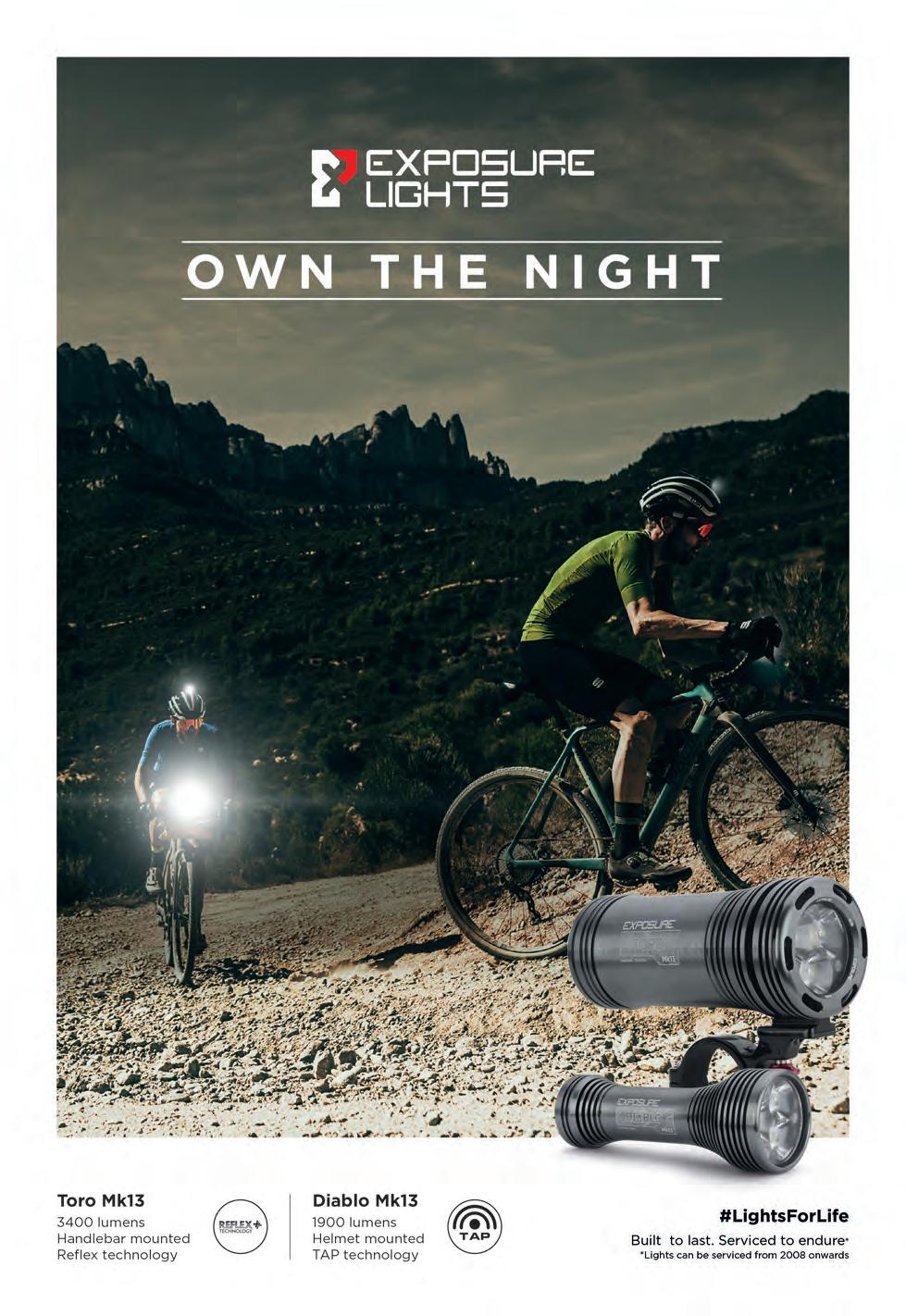
To celebrate International Women’s Day, Izzy Romilly joined more than a thousand other cyclists to officially launch LCC’s Women’s Network with a ride across the city
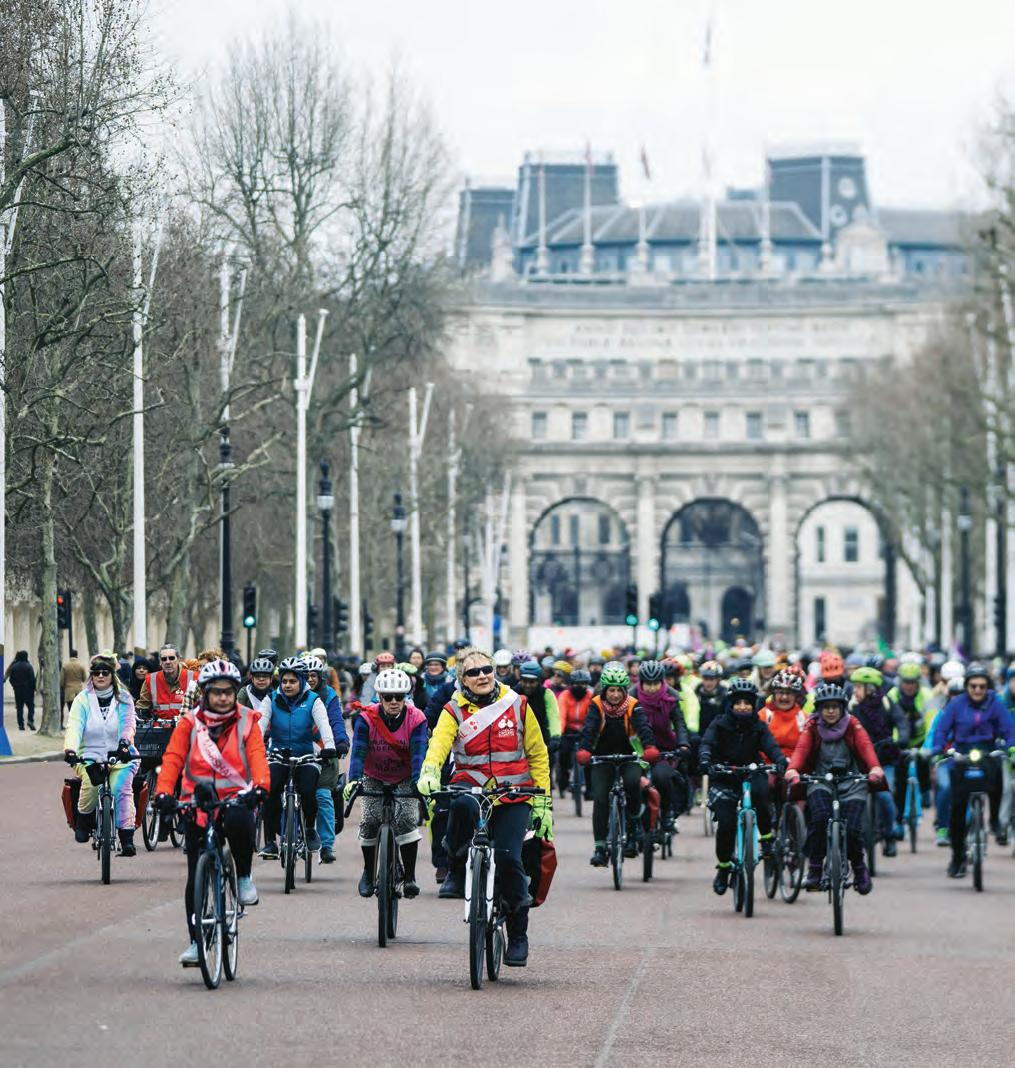
14
LET’S UNLOCK CYCLING FOR WOMEN

ON THE first Sunday of March, more than a thousand women and their allies came together in a joyous, united bike ride to mark International Women’s Day. Co-organised by LCC, JoyRiders and Londra Bisiklet Kulübü (LBK), it was brilliant to see such a diverse group of people filling the streets, on bikes of every size and style, calling for a London where women are free to ride. Speakers included the Mayor’s Walking and Cycling Commissioner, Will Norman.
We came together in this positive protest because women, and so many others, have been
locked out of cycling for too long. Somehow, it still feels like a radical act to take up space on London’s roads. And despite so much progress in recent years, women make up less than a third of London’s cycle trips, and rates of cycling are even lower among women of colour.
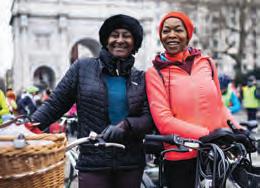
At the same time, just a tiny fraction — about 1% — of London’s children get to school by bike. Our transport network can still be exclusive and inaccessible for so many Londoners — not just women, but also children, older people, people with disabilities, and less confident cyclists.
Following the ride, we also
CAMPAIGN LONDON CYCLIST Spring 2023 15
launched a petition to ask the Mayor to act to make sure women in London cycle as much as men (see link at end).
What do women want?
As women, we know that being able to travel cheaply and independently by bike can bring us confidence, health, joy, connection, and freedom (see panels from Sakinah and Annette). But right now, all of these great reasons for women to cycle are undermined by the challenges of getting on a bike (as well as storing and maintaining one). In a range of subtle and less subtle ways, our transport network, like so much else, isn’t taking women’s circumstances fully into account.
So we came together in late 2022 to create LCC’s Women’s Network. We’re calling for an inclusive, intersectional approach to promoting cycling, where using a bike is a safe, easy, and everyday option for Londoners of different abilities and circumstances. We see unlocking cycling for women as a key part of this puzzle. When women can get on a bike and know they’ll get safely and painlessly from A to B — including with a kid or two on board — cycling will be a possibility for many more of us. We’ve set up a steering group consisting of LCC staff, LCC trustees, local activists, JoyRiders and LBK, and the ride was just the beginning of our campaign to unlock cycling for women.
So our fun ride had a serious purpose. We are calling on the Mayor to ensure that cycling is an inclusive transport mode that women and men use equally, across London, by 2030, by:

n Addressing physical safety for women when cycling,
n Addressing social safety for women when cycling,
n Thinking beyond the commute, to create safe local networks for cycling.
How have we decided on these three key areas?
We know that, as it stands, the main barrier to cycling in London is fear. That includes the fear of collisions on the road, as well as fears of abuse or harassment, which are particularly acute for women. Even more so than men, women tend to prefer dedicated cycle routes — even choosing longer journeys to seek out routes that feel safer.
Sadly, poor behaviour from some drivers, such as ‘punishment passes’, are still relatively common and it takes courage and confidence to keep getting back in the saddle after being verbally or physically intimidated on a bike. The term ‘social safety’ is increasingly used to describe the bullying behaviour some cyclists are subjected to.
So what can be done to rebalance the numbers and get more women out on the roads?
Research suggests that safe infrastructure is particularly important for women. Data from fitness app Strava, for example, showed a massive increase in women’s cycling during the lockdowns of 2020,
16
Photos: Izzy Romilly, Calvin Cheung
when roads were significantly quieter than usual. There’s been amazing progress in recent years, including the creation of cycle superhighways in and out of central London, however, UKwide, commuting makes up less than 15% of journeys, and longer commutes are primarily taken by men. By contrast, the majority of women’s trips aren’t about getting to and from work. The school run, for example, is more likely to be done by women. This suggests that these major routes in and out of central London need to be complemented by a fine-grain local neighbourhood network, making shorter, local journeys easier, safer and more appealing. London also needs to reduce use of routes that go through parks, industrial estates and along towpaths at night.
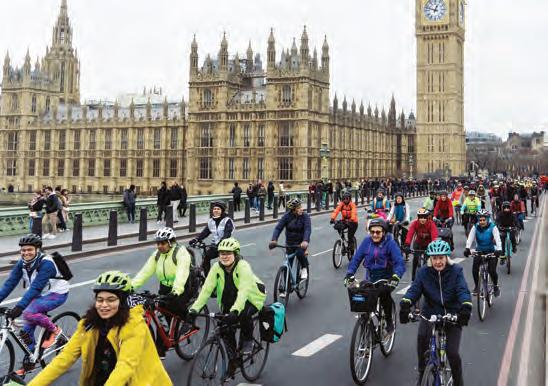
Fear isn’t the only barrier for women, though. We know that women are time poor, more likely to be looking after children, and spend more of their (disproportionately lower) income on rent and other necessities. Also let’s say you don’t have any onstreet cycle storage — how exactly are you going to get your bike up

two flights of stairs and into your flat with a small kid in tow? With all of these practical barriers, it’s important that getting around by bike is simply made much easier — and that will benefit everyone.
We want to see progress on all of these issues, so we can unlock mass cycling in London. Ultimately, as LCC, we want to represent everyone who wants to cycle, not just those who are already cyclists. So campaigning for the removal of barriers that stop certain people and communities from cycling is our job. That’s why safe infrastructure is a key focus for us. Through our Dangerous Junctions campaign, Climate Safe Streets, and the constant efforts of volunteer-led groups and our partners in every London borough, we’re pushing for a cultural and
ANNETTE’SSTORY
“I got into cycling during lockdown, when the roads were changing. I wanted to do what so many others seemed to be doing — going out cycling, feeling free. I wanted another mode of transport, and there were more cycle lanes, so I thought why don’t I try them?

“I was lucky enough to live near someone from JoyRiders, so eventually I got a bike and had a couple of one-onone sessions and my instructor gave me lots of confidence to get on the roads. Now I’m loving cycling — I’ve discovered so many beautiful areas of London. It gives me a sense of freedom and independence, and I feel good mentally.
“For me the main barrier to getting started had been people’s attitudes towards cyclists, including other cyclists as well as drivers. Sometimes I feel intimidated because I’m still gaining confidence. I want to see more cycle lanes wherever it’s realistic. What I’d really like to see is more options to trial out a bike before you buy one. And I’d like to be able to take my bike on the train more easily too.
“We’re fortunate to have so many cycling groups that are inclusive to women of all backgrounds: JoyRiders, Cycle Sisters, Black Unity Bike Ride. If you’re thinking about getting started, I’d say look out for local cycling groups, specific ones that make you feel comfortable. Then try it out for fun!”
CAMPAIGN LONDON CYCLIST Spring 2023 17
political shift so that prioritising people walking and cycling is the norm, everywhere.
Greater inclusivity
As we campaign for greater inclusivity in cycle provision in London, inclusivity is also a priority for us within LCC. Fresh resources are being developed to support local groups to grow and sustain their activities, and these will include ways of reaching a far wider range of people. We’re also exploring ways we can encourage more diverse applications for staff and trustee posts.
A new digital platform is being developed for Cycle Buddies, our behaviour change programme which matches up experienced cyclists with those who’d benefit from having a friend with them on the roads. This programme has had great participation from women and people from diverse communities: a relaunch this spring will make the programme even easier to use. Family Cycle

Buddies will be piloted too, bringing free, practical support to even more people, including the very youngest Londoners.
Despite the barriers, more and more women are discovering the joy of cycling right now. Often, this is happening because of amazing community groups and networks like LCC’s official partners, JoyRiders and LBK. Both offer great support to women, whether they’re just thinking about getting started, or are experienced cyclists who want to continue connecting with others and exploring the city.
LCC’s Women’s Network is only just getting started, so look out for more from us. Maybe we won’t have to wait until the next International Women’s Day before we get together again? If you’d like to be involved, please visit the website (lcc.org.uk).
n Please add your voice to our petition to the Mayor, by signing and sharing it: https://action.lcc.org.uk/safe-cyclingfor-women.
“I first learnt cycling when I was a child. I’d say that a bicycle has always been a huge part of my life. In Singapore, where I lived most of my life, I participated in many night-cycling adventures, formally organised by various community groups, as well as with friends. In July 2019, about one month after I moved to London, I bought a new bike. I needed to find a community and found a cycling group called Cycle Sisters through a newsletter. I was so thrilled to be in the company of like-minded diverse women who cycled together. It was through them that I got to know about Joyriders.

“In the wake of the pandemic, I became a regular rider with the new Joyriders group in Brent. It was through this group that I transitioned from a rider to a volunteer backstop, and to a ride leader. I want to empower and inspire women from all backgrounds to enjoy cycling and gain confidence in cycling around London.
“Through Joyriders I have been able to thoroughly explore London, and gained the confidence to cycle anywhere I want on my own. I cycle mainly as a means to discovering new places, immersing myself in nature. There is the air of liberation when I feel the wind brush against my face, a sense of adventure — and a deep contentment with the workout I’ve done just by cycling!”
CAMPAIGN 18
SAKINAH’S STORY

ELECTRIC SWITCHERS
Some of the capital’s famous hire bikes have gone electric. Melanie Etherton speaks to a handful of riders about their experience with the new fleet
BEEN OVERTAKEN by someone on a Santander bike recently? Well it’s possible that was one of the new pedal-assist models, Transport for London’s first move into the increasingly competitive rental electric bike market.

It’s a good time for hire bikes in London. The classic blue-and-red bikes continue to register record use, with more than 11 million annual hires. But now TfL is jumping on the popularity of existing dockless hire companies, such as
Lime and HumanForest. So since October 2022 you’ve been able to find e-bike options at the official Santander docking stations.
These e-bikes look similar to the classic ones, but with a black stem and handlebars to help you pick them out. They carry little green ‘e-bike’ stickers, plus a display screen at the front to show you how much battery charge is left. And, like the classic Santander bikes, you still need to start and end each journey at one of the 800-plus docks, which currently span from Hammersmith across to Stratford, and from Camden down to Southwark.
A fun fact: the Santander e-bike batteries don’t actually charge at the docking station. Instead their batteries have to be manually swapped out roughly every two days for a recharged one. Keep your eyes peeled for the maintenance team cycling round town on TfLbranded e-cargobikes making the changes.
Starting at £3.30 per 30-minute ride, the e-bikes are currently only available if you’re a registered member of the Santander scheme, and there’s only 500 in the whole city.
We spoke to some of the capital’s early adopters to find out how the e-bikes shape up…

20
Photo : Ian Mansfield
DECCY JARRETT
Age: 35 Borough: Tower Hamlets
Where do you ride?
In the daytime I work for NHS blood donation, taking people’s blood. I cycle to Stratford in the mornings, then back home in the evenings through Victoria Park. And by night I’m a DJ; I usually get the tube to work and cycle back around 2am or 3am.
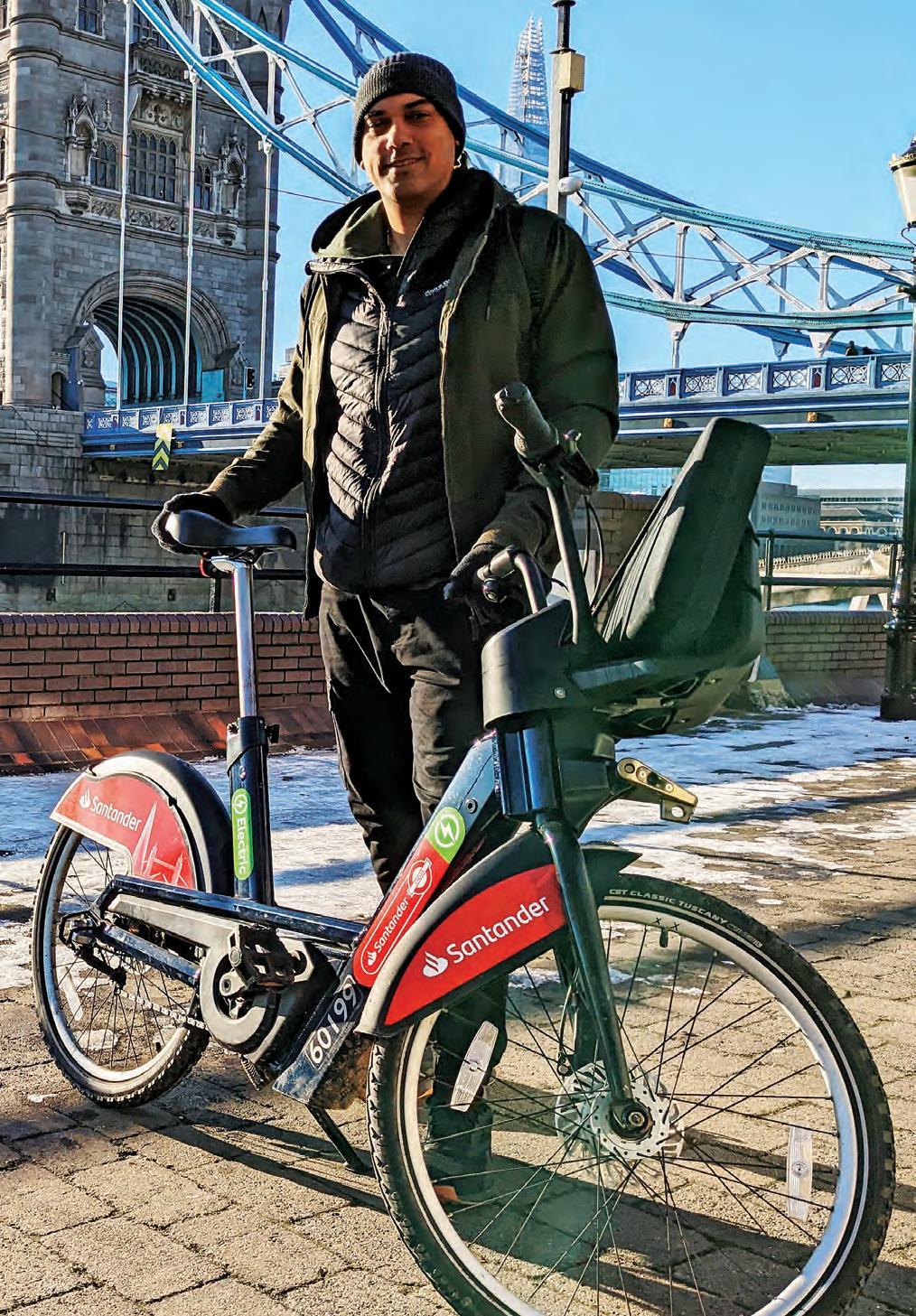
How do you rate the Santander e-bikes?
From a safety aspect they’re really good. They’ve got those new lights on them and the tyres are like mountain
bike tyres, so you can go off-road a bit. Overall it seems like a well-built bike.
What would you improve?
One minor gripe is that it doesn’t take my larger set of DJ gear. I’ve got my smaller decks on the front in the photo, but the cord over the basket is way too tight compared to the old design.
Why do you choose cycling?
I love to be active and cycling’s such a good way to do that in London. And the cost! The amount of money I’ve saved cycling instead of using the tube, buses or taxis I can’t even imagine. Hundreds, probably thousands. And
environmental reasons. I’m a vegan and sold my car when I moved to Tower Hamlets about four years ago. So, yes, now I’m one of those annoying vegan cyclists!
What would make your cycling life better?
Absolutely more Santander bike docking stations. There are too few bikes and too few bike stations. Cycling is only going to grow, with people becoming aware of how cheap and easy it is, and it’s a silver bullet in terms of health as well. But you need that accessibility for people to be able to take advantage of it.
LONDON CYCLIST Spring 2023 21
NATALIE GLOVER
Age: 34 Borough: Brent
Where do you ride?
Today I cycled from Tower Bridge to Regent’s Park with a group of NHS patients for our recovery project with LCC.
How do you rate the new e-bikes?
The bike itself is a great design, very comfortable to ride. You hear ‘e-bike’ and you’re like hmm… I was expecting it to be more hi-tech, but actually it was quite easy. You just get on and pedal like you would a normal bike.
What would you improve?
This bike would probably suit someone with arthritis or joint issues as you don’t have to pedal too hard. My body was warm but my hands got cold even with gloves.
Why do you choose cycling?
I was invited to join this ride by another member of the rehab team. Our cycling project helps people after major heart surgery: promoting a healthier lifestyle is important for patients’ fitness, and their confidence. It’s a great option to help them get back out there.
Me personally, I last cycled on holiday and, before that, not for 15 years. Never in a million years would I have thought I’d be cycling in London in winter with my cardiac guys. I’d definitely do it again.
What would make your cycling life better?
If TfL is trying to make things greener, they need more e-bikes and they need to be more affordable. The price of an e-bike is high, so the hire needs to be in reach for everyone.
n Find out more about LCC’s work with the NHS at lcc.org.uk/nhs.

22
Photo: Becky Mursell (beckymursell.com). Becky is a professional photographer looking to shoot more people who cycle in London for a series of portraits. For the chance to get involved, please contact her via her website.
CREE WILLIAMS
Age: 31 Borough: Hackney
Where do you ride?
I use the bikes to get to work — I can get from the docking station near my house to work here in Camden in 20 minutes. If you want to get a quick commute in, just go on the app, hire a bike, ride, then dock it in a station and come out. It’s quite good, to be fair.
How do you rate the Santander e-bikes?
Efficient! In terms of fitness, I would say
the non e-bike is better — the e-bikes are more of a comfort ride. And costeffective. Before I was using the Lime bikes quite a lot which was costing me £4 to £5 for a 15-minute journey.
What would you improve?
More Santander e-bikes would be handy. They are quite scarce, so if you do see them, it’s like ‘quick, grab it now’! If you plan for one and miss it, you’ve got to put in a real shift pedalling on the non-e-bike to get to work on time.

Why do you choose cycling?
I’ve been using bikes a lot more since Covid. I think it’s the way forward and a lot of people should adapt to it. It’s just easier.
What would make your cycling life better?
We need to raise more awareness. I also drive and now I’ve got a lot more respect for cyclists; I’m seeing another side to things. It’s good that a lot of people are using bikes, and taking a more informed approach to cycling and cyclists. Now you’ve got lots more bike lanes too and I think that’s a good thing.
LONDON CYCLIST Spring 2023 23 LONDON
JUNE DREW
Age: 69
Borough: Visitor from Sussex
Where do you ride?
I went with my family from the top of the north-south Cycle Superhighway in Kentish Town down to the bottom in Elephant and Castle, and then after our visit we cycled all the way back up in the dark.
How do you rate the Santander e-bikes?
Overall, good. I felt safe and the e-bike helped me make the distance of the journey. It was fun to see all the new buildings as we went along. I used to live in south London when I was growing up, and it was nothing like this: the city’s changed so much.
What would you improve?
For me the e-bike was too heavy. I couldn’t even lift it up the kerb onto the pavement when we stopped. It meant at one point I fell off when we were standing still! I wobbled, couldn’t hold up the weight of the bike and ended up on the floor. We laughed about it, but my hand still hurts.
Why do you choose cycling?
We needed to get around London without using public transport due to the risk of Covid. We knew there was a good route and someone in my family had a subscription to Santander Cycles so we agreed we’d try cycling. They got me out this bike and lent me the helmet and hi-vis. My friends are going to be so impressed when I tell them I cycled in London. One of our ladies at yoga does triathlon, but she won’t cycle round here.

What would make your cycling life better?
I don’t ever cycle at home. It’s not safe so it’s not even an option, and we gave our bikes away. We care about the environment so I generally walk everywhere that I go day-to-day, like my yoga classes, but for longer trips and big shops we use the car.
LONDON 24
LONDON CYCLIST Autumn 2022 24


26
CHRISP STREET PROJECT
Toby Zeidler speaks with the latest in a growing band of brilliant community groups bringing more people to cycling
The Chrisp Street Project is a community hub in Poplar, east London. The space was set up through a collaboration between a local housing association named Poplar HARCA, Sustrans and Hubbub (an environmental charity working in support of Tower Hamlets’ Cycle Sisters). We spoke with Fliss and Terri from Poplar HARCA about the local impact this project has made in the area.
Have you both always cycled? If not, do you remember what made you start?
Myself and Terri both commute by bike. We both learned to ride as kids and cycled regularly growing up, coincidentally we both stopped pre-teens and didn’t start again until our mid-20s when living in London. I started cycling again as it seemed like the best way to get around. Despite that gap, I now love cycling both to get around and for leisure. Terri cycles together with her family on a regular basis too.
How did the idea for the cycle hub project come about?
The idea came up at a meeting of the Tower Hamlets Cycle Partnership. set up by the local council. We, as Poplar HARCA, were keen to set up a bike hub to support residents to cycle more. Across our estates, we have multiple bike containers and other amenities, but we hadn’t seen the uptake for cycling
that we had hoped for. As it turned out Sustrans and Hubbub had been having similar conversations and from this we decided to pool together and aim for a hub that would serve all our aims as best as possible.
As partners we were all aware of one another and had crossed paths before, but the council bringing together that Cycle Partnership was the ideal forum to discuss an idea like this.
How was the group initially set up and how did you go about getting the project off the ground?
Following on from the meeting with the Cycle Partnership, the three of us partners met up separately to try to identify the main local barriers to cycling that we wanted to tackle and the kinds of activities that we could offer to address these.
Our first project planning meeting was in March 2021 and the space opened up in August 2021 — so things took off fairly swiftly. We were really lucky to get the space that we did, which massively helped in getting the project up and running so quickly.
Was the project inspired by any other groups who’ve seen similar successes on a local level?
Absolutely! Cycle Sisters was a big inspiration to us, with similar aims of broadening diversity within cycling and enabling people who might not otherwise have cycled to try it out. Other partners in the borough like Tower Hamlets Wheelers and their communityled approach were a real boost to us.
As well as being inspired by all these various groups doing similar things, we were able to see the gap for us to do things slightly differently and tailor our activities to what we felt Poplar residents needed.
How many people have taken part in activities so far
LONDON CYCLIST Spring 2023 27
INTERVIEW
and what kind of age range have you had?
Over the two years we’ve been open, we’ve run 179 activities and had more than 1,300 participants, and over 3,100 people visiting the hub and engaging with us. In term time we aim most of our sessions toward adults and, of these, most are women-only sessions.
Toward the end of the winter term of last year, we trialled an after-school family session which was massively oversubscribed. Kids coming out of school would have an hour to learn to cycle or to refresh their skills. Age four is the youngest we’d be likely to take as we need them to be able to follow instructions. We’ve had attendees in their 60s and 70s coming in and everything in between.
Have there been particular visitors that stand out as being positively affected by their session?
We’re really lucky to have lots that stand out! Two women who had never cycled before started through the hub and now ride everywhere together — they’ve taken advantage of our free bike loaning system and use their bikes for everything including getting the kids to and from school and other activities. The kids told their mums how proud they were to see them cycling, which is really wonderful for us to hear. Women often tell us that they haven’t ridden since childhood, but once back on the bike their self confidence increased.
One lady called Jahura has become really involved in the social rides and told us that when she cycles it makes her so happy that her face and cheeks hurt from smiling!
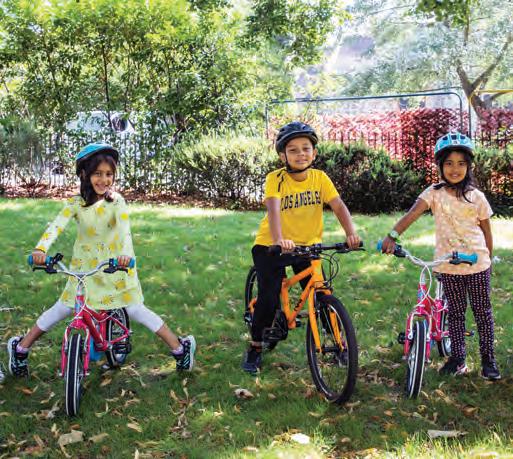
What do you think is the biggest barrier to more people taking up cycling?
Safety concerns, especially on main roads, is always a headline problem. Lack of secure and affordable storage space is a really common one too. In our area, it’s common for households to be quite large and so if the whole family are to cycle together, it suddenly becomes a question of how to store a large number of bikes, not just one or two. The cost of buying a bike is often prohibitive as well as access to cycle training.
Lately, Tower Hamlets has been reporting people wanting better access to electric bikes as well, which would enable so many more people to ride.
What barriers do your women participants specifically face and how can these barriers be removed?
Loss of confidence having not cycled for a long time is a really common issue, which is sometimes linked to cultural norms as well. Once girls become young adults, it can be seen as less normal to cycle in some communities. Some Muslim women also express concerns about riding in certain clothing.
The cycle hub was set up with the intention of breaking down these barriers which is why we offer free, friendly and welcoming skills sessions, free bike loans and crucially, it’s a scheme led by women in the community. This creates role models so that other women see women who look like them in their area cycling.
What have been some of the biggest successes of the project so far?
Opening up and still being here two years later already
28
Safety concerns, especially on main roads, is always a headline problem

feels like success. Funding permitting, we’re hoping to be back running from Easter until October. We’re really proud that the service is still free which is vital to ensuring the service is as accessible as possible.
It’s amazing to see so many women who have never cycled now cycling for pleasure, short journeys and spending time with their kids. Other local organisations including LCC and Bikeworks have also made use of the space. Zedify, a local bike courier firm, has even offered us trained bike mechanics to help maintain our fleet which has been extremely helpful.
What are you most excited about for the future of the Chrisp Street hub?
We’ve been running focus groups to help us refine the programme and found that once people have learned to ride there’s a missing next step which we can look to provide which is social riding. This will be great to help build confidence and also provide opportunities for more one-on-one sessions with partners like Bikeworks. We’re also really keen to start opening on the weekends to broaden our reach. If funding allows we’re hoping this year will hold more job security, having guaranteed the space for the full period to October, and we’ll also be aiming to invest in our staff with ride leader and maintenance training.
What’s been the biggest challenge so far?
We’re really lucky to have the space we have, but it is a ‘meanwhile’ space which means there is a certain level of insecurity. This is why it’s so important that we broaden our remit and ensure that we’re as resilient as possible and moving with the needs of the community. We’d love to be open more but it comes back to funding.
How has Poplar changed for cycling during your time in the area?
We’ve definitely seen an attitude shift in the area where we’re seeing more people wiling to cycle. Our key remit has always been enabling more women to ride, and narrowing that imbalance that exists across London but is heightened in certain areas and communities due to other factors we’ve talked about. The Cycle Partnership through the council has been really useful for groups like us to learn from and share experiences with other organisations in the area. Whilst the infrastructure on the roads hasn’t hugely improved in Poplar in the last few years, we have seen
more bike shops opening up, including just around the corner from us.
What’s your favourite place to cycle in the local area?
I used to ride across from Greenwich and the Thames Path has always been a joyous route for me. Terri and I both love riding to local parks like Victoria Park and the Olympic Park which have some lovely routes to and from, particularly on the canal.
Do you feel optimistic for the future of cycling locally and across east London?
I think that Covid brought so many people back into cycling out of necessity and there’s a certain momentum that has come out of that to try to hold onto those people to see cycling as an enjoyable and green means of getting around and staying active.
I think also, sadly, the cost of living crisis brings into focus some of the tough choices people are having to make and if they can have access to a free or affordable bike then that can be really beneficial in easing some of the pressure from transport costs.
Tower Hamlets council has been really supportive of our behaviour change work. We’re hoping to keep pushing for better access to cycle skills sessions that can be the catalyst that a nervous rider needs to start cycling.

30 INTERVIEW
GIVE YOUR BIKE A BOOST
FOR THE past two years the team at Boost has been developing a simple system that converts almost any bike into an electric bike. Led by engineer Nick Bailey, they’re on a mission to give as many riders as possible access to the e-bike experience at an affordable price.
Designed in the UK, it’s a lightweight kit comprising just two parts — a rear hub motor and a removable battery pack — both joined by a single cable.


You can buy the kit from a growing network of independent bike shops across the UK at an introductory

discount price of £700 all in. Currently there are 15 partner shops across London, including Paradise Cycles in Bethnal Green. Its owner and lead mechanic, Louis Wigston, is a huge fan: “Boost is the best conversion system we’ve seen; it’s made from quality components, is simple to fit and delivers a great ride.
For our customers it’s an ideal way to start their electric journey.”
As Boost founder Nick adds: “If people only have space for one bike and don’t want to get rid of it to get an e-bike, we have the solution.”
To find out more about the system, visit the website or email info@boostbike.uk. And LCC members can get a free wireless display unit (worth £50) when they buy the Boost kit — visit the LCC members website for details.
I’ve recommended it to anyone who’ll listen, I’m over the moon — Jim (customer)
For product & stockist info, go to boostbike.uk ADVERTISING FEATURE
Boost®
BEYOND INFRASTRUCTURE
JUNCTIONS, PROTECTED cycle lanes and road design are prominent in LCC’s campaigning work, but we cannot become a true cycling city without also tackling the other factors that deter cycle use and increase road danger: poor vehicle design, unaware drivers and insufficient enforcement. Even in the Netherlands, where protected cycle lanes are ubiquitous, road injuries and fatalities still take place. And in London, where cycle lanes are still limited in number but
almost every road has a pavement, a fifth of pedestrian fatalities involve a lorry, often when the vehicle moves off from a standstill.
LCC’s extensive work on road danger reduction is less visible than the battles over installing, or ripping out, cycle lanes, but it is bearing fruit both in London and beyond. Recent legislative and administrative changes mean safer lorries, better trained drivers, more lower speed limits, and increased enforcement against traffic offences. But the Mayor’s Vision Zero target,
supported by LCC — of no fatal or serious injuries on our roads by 2041 — remains a challenge and will require a re-doubling of efforts to tackle road danger.
Safer lorries
Long-standing LCC members will recall our safer lorry campaigns of the 2000s and 2010s which were prompted by several cyclist deaths and the shocking statistic that half of cyclist fatalities involved a lorry. We first campaigned for six safety mirrors on lorries — these are now
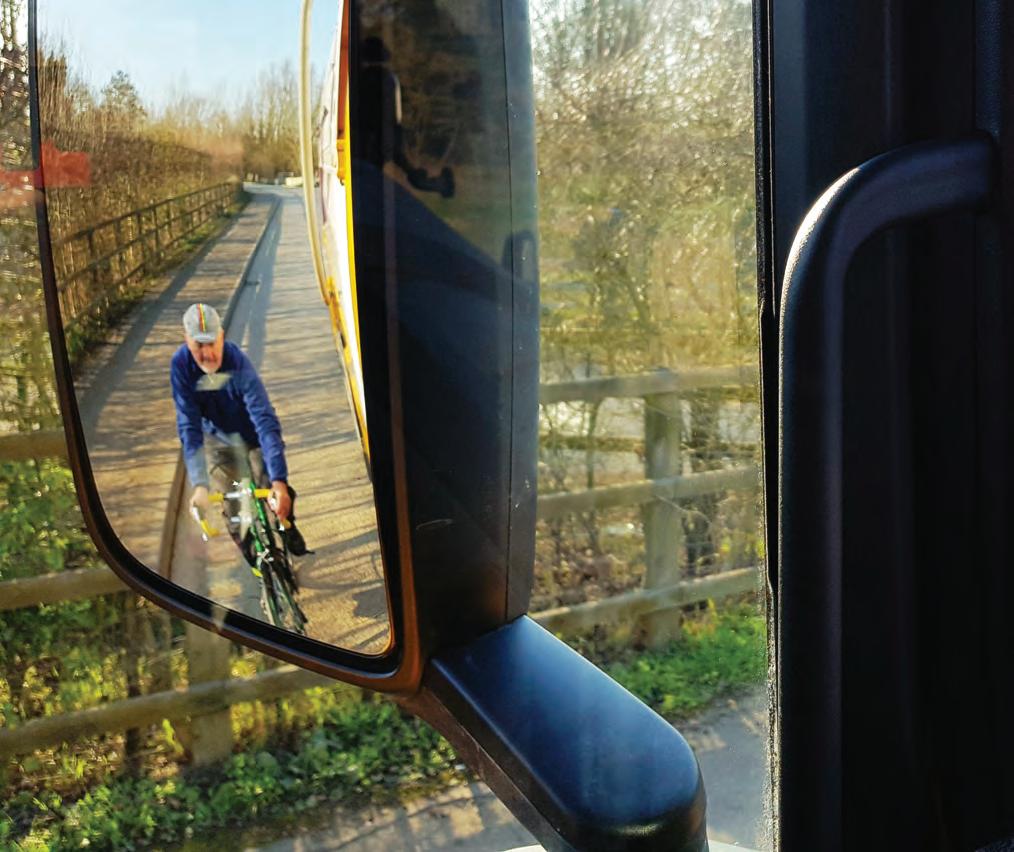
32
mandatory. Then we mocked up a construction lorry without the huge blindspots — these are still commonplace on many standard HGVs but are no longer present on London refuse carts which now have good direct driver vision (not via mirrors or cameras).
The case for safer lorries, which was also backed by the then TfL transport commissioner, Sir Peter Hendy, has led to the establishment of three vital safety standards: Fleet Operators Recognition Scheme (FORS), Construction Logistics and
Community Safety (CLOCS), and the Direct Vision Standard (DVS). All three now play an important role in reducing road danger and wider, strengthened, DVS standards are due by 2024. LCC continues to lobby for widespread adoption of all three standards.
A key to wider adoption is the procurement process — ie contract terms and planning conditions required by boroughs of firms working for the borough or on its territory. LCC recently contributed to a TfL-led webinar that set out how they can include all three standards in their procurement and planning regulations. TfL and a handful of boroughs already include the CLOCS, FORS Silver and DVS one-star standards in their contracts.
Fleet Operators Recognition Scheme (FORS)
Set up in 2008, the FORS standard (graded bronze, silver and gold)
specifies a range of safety features that a lorry must include to qualify, plus the driver checks that have to be carried out and, at silver grade, the training drivers must complete.

Nearly 5,000 firms in the UK are FORS graded, including a large proportion of London boroughs (which both own lorries and can determine the safety standards applied to large developments). They account for more than 100,000 lorries. High-graded firms report 31% fewer collisions involving their vehicles.
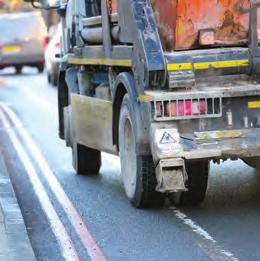
One catch is that many firms and organisations, including several boroughs, are only rated FORS bronze — this means they are not committed to the interactive practical (including on-bike) training for HGV drivers called Safer Urban Driving (SUD) that is both government approved and eligible for the Certificate of Professional Competence (CPC) that drivers have to complete.
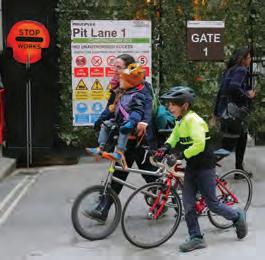
LONDON CYCLIST Spring 2023 33 CAMPAIGN
Photos : Tom Bogdanowicz
Clockwise from above: Driver alert system showing a cyclist next to an HGV; A lorry encroaching on mandatory cycle lane — now enforceable by camera; Construction site gate guarded by traffic marshals.
As part of LCC’s ongoing campaigning, Tom Bogdanowicz looks at what can be done to reduce road danger from drivers and lorries
More than 50,000 drivers have completed the SUD course, but LCC wants all those working in London to have the same advantage of understanding cyclist movements and the road danger posed by large vehicles. FORS silver grade is specified on TfL contracts and that should be the case for both boroughs themselves and anyone supplying them with services.
CLOCS
The CLOCS industry-led standard (formerly called Construction Logistics and Cyclist Safety) was a direct outcome of a report into lorry collisions following a spate of cyclist deaths, some of which were marked by LCC-organised candlelit vigils.
The independent report — commissioned by TfL and published in 2013 — highlighted the significant over-representation of lorries in fatal collisions (nine out of 16 in 2011, of which seven were construction vehicles) and concluded that a lack of attention to work-related road risk (WRRR) was a key factor. Lorry design, contractor awareness and insufficient training were all contributory factors.
For construction firms, the number of related fatalities beyond the construction site hoardings can be significantly higher than fatalities inside, where accepted regulations have long been in place. A recent estimate put the ratio at four to one. While HGVs are involved in half the cyclist fatalities in London, they only account for about 4% of the mileage driven in the capital. In 2022, out of six cyclist road fatalities, two involved
HGVs and two involved buses, while in 2021 70% of fatal collisions involved lorries.
The CLOCS standard, to which many leading UK firms subscribe, combines the requirements of FORS silver grade with a range of commitments around construction sites, notably planning of safer lorry routes (with fewer hazardous left turns) and employment of marshals at the site entrances to ensure vehicles are clean, and exit and enter without risk to walkers or cyclists.
A presentation at the recent TfL webinar made the benefits of both CLOCS and FORS very clear: “Boroughs can build CLOCS and FORS into its service contacts, and into planning consent arrangements and construction logistics plans, reducing the risk of construction vehicle activity to the local community.”
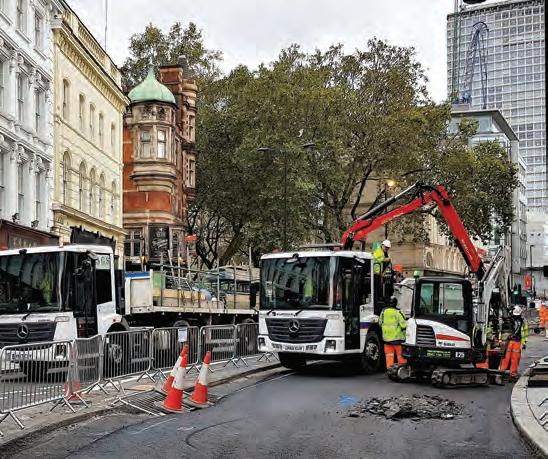
LCC invited all London boroughs to attend the webinar and more than a dozen did so, but hearing the message is not enough. All boroughs need to follow the example of those like Camden and the City of London that have the standards built into their policies.
Direct Vision Standards
TfL’s Direct Vison Standard is the most recent addition to the standards that can help reduce road danger. Its aim is to ensure that all the lorries that have extensive blindspots are replaced by ones (pictured above and opposite), with direct vision that’s similar to that of a van. Currently such lorries are more expensive, but as production increases prices will fall and even now operators benefit if they have fewer collisions and their drivers are less stressed.
The DV standard ranges from zero star (still the majority of lorries) to five star (typically vehicles with low cabs and glassed doors like the Mercedes Econic and Dennis Eagle Elite). Currently TfL requires all lorries working in London to either meet a one-star standard or fit additional safety features that include a camera system and an audio alert system.
In February 2023 TfL reaffirmed a requirement for three-star lorries as of October 2024, with vehicles rated zero to two stars having to meet stiffer ‘mitigation’ measures.
Eventually, in 2029, all lorries
34
manufactured in Europe will have to meet a set (as yet undecided) DV standard. LCC backed Mayors Johnson and Khan in lobbying for this change in EU rules. Since it typically takes about 10 years for a lorry to be replaced, by 2040 lorries with very poor blindspots should be rarely seen in London.


Limiting speeds
As we all know speed kills. LCC has long campaigned for 20mph to be the default speed limit on streets where people live, shop and work. The good news is that we are
getting there — all inner London boroughs (including Kensington & Chelsea and Westminster) have now adopted 20mph for most of the roads they administer, as have several outer London boroughs.
TfL, which administers the 5% of busier roads which carry a third of the traffic, is also switching to 20mph with a target of 220km of limited roads by 2024. So far, its central London roads have a 20mph limit and a consultation is out on 28km of key roads in north London.
A pioneering trial was taking place in Wandsworth where the borough (not police) was enforcing speed limits by camera on two roads. Intervention by the Department for Transport has stopped the trial, but a resumption is not ruled out. Such enforcement could reduce speeding on residential streets.
Enforcement
Technology is working in favour of more effective and cheaper
enforcement with gantry cameras (on TfL roads), mobile cameras (anywhere), and dash-cams and helmet-cams (anywhere) all playing a useful role in reducing inconsiderate or dangerous driving. Recent changes to the Highway Code, which LCC lobbied for, mean that there is no excuse for close-passing or so-called ‘left hooks’ at junctions.
The government also recently changed legislation so that mandatory cycle lanes (those with a continuous white line) in London are enforceable by camera. Warnings were issued in 2022, but as of 2023 it will be fines for drivers who enter the lanes illegally. Boroughs are considering use of the legislation as well. A next step for government would be to enable camera enforcement of advanced stop lines.
In London the Met Police prioritised speeding post-pandemic, issuing more than 250,000 tickets in five months in 2022, up by 75%. The target is one million per year. The Met/TfL have also stepped up enforcement using public-supplied evidence of traffic offences — more than half of submissions (which must meet specific standards) result in penalties.
WHAT YOU CAN DO
n Ask your local councillor whether your borough requires FORS, CLOCS and DVS standards to be met in its procurement and planning regulations — and if not, why not?
n If you have local roads where speeding is a problem, let the council know. They can request a mobile camera unit to both measure the problem and enforce.
CAMPAIGN LONDON CYCLIST Spring 2023 35
“Following a cycling incident, I contacted Osbornes Law. I was delighted with the care they showed, including their assistance with ancillary services such as physiotherapy. I highly recommend this firm.”














































Osbornes Law is a trading style of Osbornes Solicitors LLP. We are regulated by the Solicitors Regulation Authority (SRA). WHAT YOU SHOULD DO AT THE SCENE OF A COLLISION 01 Get out of danger 02 Ring 999 03 Exchange details with the other party 04 Take pictures 05 Find witnesses and get their details 06 Check for local CCTV 07 Get legal advice









































“Osbornes Law dealt with my cycling injury claim quickly, effectively and professionally. The support, contact and communication was excellent throughout. I would highly recommend.” Proud to be the legal partner of the LCC and their members We operate a free telephone advice line for LCC members who have been involved in a cycling crash or collision. Our lawyers will advise you of your legal rights, the legal process and whether a legal claim can be brought. Telephone: 020 3944 1334 Email: cycling@osborneslaw.com
HEEL TO THE WHEEL

38
WAY DOWN the heel to Italy’s boot, sunset streaks purple the clouds over the dark waters of Brindisi’s old harbour, the Adriatic Sea beyond. Six weary cyclists and two cheery guides (hardly breaking a sweat), pause in reverie. Brindisium in ancient times, a classical harbourside column, its marble as colourful as the sky above, marks the terminus of the Via Appia, the ancient Roman Appian Way. And a terminus today to five days of riding and winery and culinary exploration, through the famed whitewashed towns, vineyards and olive groves of this Mezzogiorno heartland, over red and rich earth, along stone walls and dramatic coastlines.
Besides the Romans, many have stopped in Puglia — Mycenaean Greeks, Saracen Turks, Neapolitans and Sicilians, Bourbons, Aragonese and Venetians, to name a few. Today, Puglia is Italian, but thanks to its very mixed origins remains proudly apart, the land between the Adriatic and Ionian seas, with a landscape as varied as its history.
Dedicated cycling tourists are always looking for somewhere new and undiscovered: Puglia fits the bill. While it may lack the spectacular scenery of the Alps, Tuscany or Sicily, or the historic icons of Florence or Rome, it is culturally rich, in the people-and-place sense. Its working agricultural landscape, Italy’s breadbasket, makes for a unique and diverse tradition, its fertile soils source of numerous fine wines — Primitivo and Negroamaro among them — in a country so blessed on that front. Bordered by two very different coasts, running from the rugged and steep Gargano to the north,

LONDON CYCLIST Spring 2023 39 TRAVEL
LCC member Conrad Heine has been visiting Puglia for more than two decades, so he’s well placed to guide us around the storied and varied Mezzogiorno region with its culinary and historical charms
ROME NAPLES PUGLIA PALERMO
to an undulating central farming landscape, which in turn gives way to flat expansive plains running to the spectacular southern tip at Santa Maria de Leuca at Puglia’s tip, where the two seas meet, its variety promises to reward twowheeled travel.
Yet while Puglia is not exactly new to travellers from the UK, and tourists in general — it became the affordable ‘New Tuscany’ in the minds of many long enough ago now that a ‘New Puglia’ is probably being hailed somewhere — its cycling potential has been unexplored and underdeveloped. While I have often spotted Giro d’Italia-style pelotons dashing along Puglia’s coasts in my two decades of visiting, I’ve long been frustrated by the lack of signage, mapping and infrastructure along its many charming tracks and lanes, and the consequent missing of proper agriturismo
At least, that was the case: for the last few years, there has been a clear shift towards utilising a climate where cycling can be enjoyed all year, save for the stifling heat of July and August, accessed by a perfectly serviceable railway system that connects Italy’s main internationally-linked cities, including Milan and Rome, to Puglia’s main centres — Foggia, Bari, Brindisi, and beautiful Baroque Lecce — in turn linking to the regional network beyond.
While waymarked and dedicated networks are still lacking, other groundwork is being done. Puglia Promozione, the regional tourism authority, now offers a comprehensive cycling

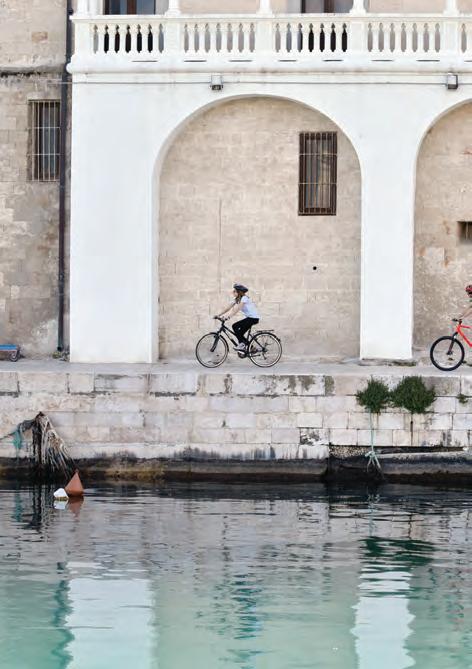
Never too far from the sea: whether it’s Adriatic or Ionian (right). And at one of many tastings (below)
guide detailing 2,000km of routes across 12 different itineraries. Alongside, dedicated tour companies have sprung up, the likes of Puglia Cycle Tours (PCT), our hosts on this latest trip. PCT offers fully guided and self-guided tours (via programmed GPS devices), with high aims and an ethos of keeping things environmentally and economically sustainable, carefully choosing locally owned and operated partners, and pioneering routes across the region’s developing cycling ecosystem. As such, its flagship ‘bike and wine tour’ aims to “converge multiple interests on a common ground: the beauty of the places, the movement, the food and wine culture… authenticity and refinement… to bring closer an important aspect of Puglian identity”.
How’s that working out? There was only one way to find out. And with such a cornucopia of options, an exploration based around food tasting seemed as good a gauge as any.
From hills to plains
Wine and cuisine may be on the agenda, but first there is cycling to be done. Over five days of riding — daily distances ranging from 20km to 50km — it’s possible to traverse some of Puglia’s most renowned DOC (designation of controlled origin) wine regions. The charming whitewash-and-stone town of Putignano, PCT’s base, is the starting point: all arches, glistening cobblestones, and wandering,
40
crooked lanes. It’s home not only to southern Italy’s oldest carnival tradition (dating back to 1394), but the oldest in Europe; each February sees three days of festivities culminating in a spectacular parade of floats and animated papier-mâché sculptures. But we’re here in November and the streets are quiet as we’re fitted out in the main square. My weight is borne by a recently-knitted metatarsal, but I spurn the e-bike offer, wanting to test out my bones on the promised climbs ahead.
And they are steep indeed, if gradual. Traversing the rolling hills of the Murge plateau we pass through a verdant landscape of wheat fields and vineyards, winding lanes and ravines, a very different Puglia from the flat scrubby macchia landscape further south that I’m more familiar with. There are no cycling lanes here as such — we are sharing with cars, motorcycles, and all else besides, but traffic is sparse, and what there is is considerate (a feature throughout the week, apart from in Brindisi).
Being a tipple tour, wineries soon come into it (and for the next few days, keep coming).
Masseria — old-style fortified farmhouses typically attached to vineyards — are a feature in these parts, these days almost universally converted to restaurants and hotels. There’s a lot to choose from on this tour, and in general, but of particular charm is the Chakra wine of Giovanni Aiello. He’s a bear of a man and in his cellar, surrounded by booths in barrels,
Quiet way: finding the best route between vineyards and olive groves

we sample ‘Chakra Rosso’, excellent bespoke Primitivo with archetypal Pugliese finger food in the slow-food tradition — delicate bruschetta, fava beans and regional cheeses.
Aiello fills us in on the challenges of operating such a small operation, in a region where bulk table-wine production — that’s those bottles of Primitivo rolling from supermarket shelves all over London onto discerning, yet cost-conscious dinner tables from Islington to Peckham — has been the name of the game. But Aiello is doing his part to restore a craft tradition befitting of one of Europe’s original wine regions, with a 2,800-year-old history.
It’s not an approach Aiello has to himself, as things unfold, but that’s for later. Cycling and wine consumption must be exercised responsibly, but it turns out to be a perfect way of sampling Puglia, especially in combination with the supposed light lunches.
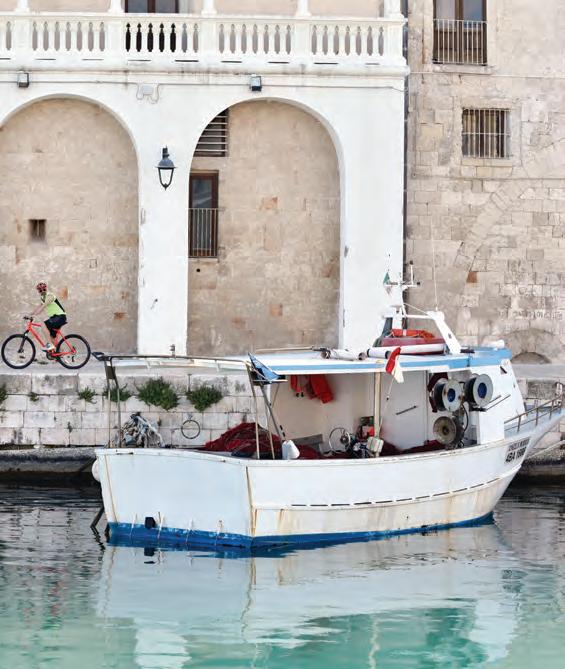
First learnings, and second, and last: everywhere in Puglia is about food and wine. This is a working region, not a culinary museum, and food is taken seriously here. Whether cycling or not, Puglia’s long tradition of hospitality ensures all needs are catered for.
Into the valley
Second riding day and the landscape changes: a plunge into the Valle d’Itria. This is iconic Puglia: land of drystone walls, red earth, white lime-washed houses, and the heartland of a particular Pugliese icon. The trulli, pyramidlike, UNESCO-listed dwellings of stone houses with piled conical drystone roofs, often adorned with Christian symbols, dot the landscape. One theory behind their design
TRAVEL LONDON CYCLIST Spring 2023 41
Photos Antonio Manfredi, Emanuela Campanella
was to allow quick dismantling to foil tax inspectors seeking property tax. What is not disputed is that their construction draws on the karst limestone that underpins the terrain and gives the wine in these parts its distinct mineral tang besides.

Stunning buildings abound as once again we cruise along roads and lanes, not cycle paths, but it doesn’t matter, and the GPS navigation aids work just fine. Onwards to Alborobello, a trulli Disneyland, where the whole town seems to be trulli, and at certain times of year — not November, thankfully — the population is entirely tourists. The theme continues through lunch at Trulli Il Castagno, underneath the conical roofs, fine wines and aromatic herbs accompany home-made orecchiette (‘little ears’) pasta and cime di rapa, the broccoli-like greens that are — alongside fave e cicorie, (puréed fava beans with chicory) — probably my favourite typical local dishes.
After a night of yet more trulli — in a hotel complex once a nunnery — the landscape is changing, flattening out into coastal plain. But first, Locorotond. From the Latin ‘locus rotundus’ it is, as the name suggests, a perfectly ‘round town’ of white geometric, roof-sloping cummerse houses, elegant portals and floral balconies: only in Puglia. Onwards, the antecedents of Puglia’s agricultural tradition are writ large at the 10-hectare Pomona botanical conservatory, after the Roman goddess of gardens and orchards, where Paolo Belloni, a refugee from Milan in these parts, has made it his business to preserve ancient varieties of fruit trees from
Land of trulli: all conical roofs and white walls (above), with a classic spread for hungry cyclists (top left)

all over the world. Over 600 varieties of fig and 300 of pomegranate nestle here. And at the centre of a lavender labyrinth, the persimmon of Nagasaki, propagated from a fruit found alive in that town after the nuclear blast. We walk its lines in silence and contemplation. And then to the one piece of true cycling infrastructure encountered in these parts. Well, sort of. The Ciclovia dell’Acquedotto Pugliese is a projected 500km cycle route following the historic route of a Roman aqueduct from Campania to Puglia’s southernmost tip. A 20km section of the trail has been completed and it’s charming, an easy ride through forested valleys, where trulli and donkeys sit photogenically. These are cycling trails in the truest sense, and while the road riding so far has been perfectly fine, here is a glimpse of the possibilities a continuous trail will one day offer.
Between the seas
Next day, the nature of Puglia as a region of many faces appears again, as the rolling Valle d’Itria gives way to flatter, more severe Salento, Puglia’s most southerly region —my Puglia through the decades it so happens. Once land of the Bronze-Age Messapians, said to hail from Illyria, across the waves in present-day Albania, it lies between the calm Ionian Sea, the inner heel, and the far lumpier Adriatic. Contrast within contrast, and here we hit the coast. It’s the Ionian side: being November, the sea is tossing far harder than August, when this long shoreline teems with holidaymakers, and the beach resorts feel unseasonal and forlorn.
42
Still, the deserted littoral makes for exhilarating riding, all the way from San Pietro in Bevanga through the Salina di Monaci nature reserve, a salt marsh named for the salt-making monks of a Benedictine abbey once found hereabouts. The ruins remain, now the backdrop for the flamingos congregating here year-round (admire their beauty from a distance, those fences are there for a reason).
There is further elegance at Torre Colimena, a fine buttressed 16th-century tower, surrounded by prickly pears on a picturesque rocky cove, built to guard against Turkish invasion, one of many such along these coasts. This is the home of Primitivo di Manduria, a dark intense grape famed for its blending qualities. Under a clear, warm sky, we turn inland through the regimented fields of vines and meadows, alongside the stone walls towards Guagnano, where Primitivo gives way to Negroamaro (‘black bitter’, much more palatable than the name suggests).
This tour blends saddle time with good food,
and there’s a sting in the tail: our next stop is the winery Cantele Cellar, where we must not only eat more oricchiette, we must also make it. After a demonstration of how to properly prepare cime di rapa given by George Clooneylookalike Mino, his mother Lisetta takes over. The long strings of pasta dough are laid out and we work in silence. Lisetta makes prepping the little ears look easy, with a deft turn of thumb and knife. Most of the crew do just fine: I, unfortunately, am all thumbs. It’ll taste the same, I rationalise; Lisetta doesn’t agree.
The homeward stretch
After a final night in Lecce, Puglia’s Roman and Baroque gem, and a visit to the resplendent Romanesque Abbazia of Santa Maria di Cerrate, we are back on the bikes. This time on the Adriatic coast, far more formidable than the Ionian we have only just left behind us, clear on the other side of long, narrow Puglia.
As we pedal off through the nature reserve of Torre Guaceto, we contemplate the spectre of invading Saracen fleets — here, the eponymous tower serves a similar historical role to Torre Colimena back where we were. The 8km of reserve stretches in wetlands, sandy coves and dunes and scrub down the coast towards Brindisi. After that, it’s a hop along the coast, through Brindisi’s dense (if courteous) traffic, all the way to the town’s old harbour.
It’s early days for Puglia’s cycling journey and, as a seasoned visitor to these parts, it’s a very different take. Infrastructure-wise, Puglia is making a lot out of a little, but on the evidence of these few days, it can afford to dream big dreams about the potential of bringing more wheels to the heel.
FACTFILE
Getting there: travelling to Puglia by rail is a long but satisfying process, with international rail services connecting via Milan and Rome, to Puglia’s main centres — Foggia, Bari, Brindisi, and beautiful Lecce — in turn linking to the regional network (trenitalia.com).
Regional rail: Ferriovie del Sud Est (fseonline.it).

When to go: all year round, but avoid the heat of July/August.

Gear: you’ll only need standard cycle gear, tailored to the season.
Puglia Cycle Tours (for tours & bike hire): pugliacycletours.com
Puglia Promozione official cycling guide: viaggiareinpuglia.it

TRAVEL LONDON CYCLIST Spring 2023 43
Timeless touring: from one stunning town to another (above), and on perfect old aqueduct trails (left)
BREAKS BY BIKE
With summer just round the corner here’s a selection of great ideas for your next cycle-related getaway
EXPLORE
THE ISLE OF WIGHT BY BIKE
Head to the Isle of Wight for a journey of discovery across some of the UK’s best scenery — from rolling hills, quaint little villages and stunning sea views, you’ll be amazed on what the island has to offer. Whether you’re a beginner or regular cyclist, there are more than 200 miles of cycle tracks, byways and bridleways for you to explore. There’s also the full ‘Round the Island’ cycle route which covers 65 miles and can be shortened or split over a few days if you prefer — it’s hilly though, so be prepared!

It’s best to stay for at least a weekend to fully appreciate all the Island has to offer, so why not book a stay at one of our many cycle-friendly accommodation providers?
Haviland Cottage (havilandcottage.com) is based in Ventnor, east side of the Isle of Wight. It offers secure bike storage, cleaning facilities and a five-seater jacuzzi to soothe those aching pains after a long day in the saddle.
Or if you’re looking to discover more towards the west coast, The Bay Boutique in Freshwater (stayfreshwaterbay.co.uk) is a bicycle-friendly B&B. If you’re looking to travel to the Island without a bike, then the team here also offers an electric bike package that you can add onto your stay.
If you fancy a tasty home-cooked treat or two while out on your ride, then why not have a stop at Pedallers café in Newchurch. This café has plenty of bike parking and boasts a unique repair station for cycle maintenance. (pedallerscafe.co.uk)
So, whether you’re after a thrill-seeking off-road ride, or a relaxed road pedal through the countryside, say ‘yes to the adventure. Say ‘yes’ to the Isle of Wight.
n visitisleofwight.co.uk
Photo: James Cripps
CYCLING CORSICA’S COLS

Known as the ‘Island of Beauty’, Corsica cannot be beaten for its stunning mix of mountains and coast. And this trip is an unforgettable six days of cycling and exploring the north of this spectacular land. From deserted mountain roads with breathtaking views, to exhilarating descents and challenging climbs — such as the Col de Vergio at 1,477m — the Corsica Cols trip has it all. The island is famed for its density of cols and this ride features about 70 of them!
Stay in the bustling town of Bastia, seaside resorts including St Florent and the fortress town of Calvi. Toast the day with local chestnut beer, sample delicious local food and make memories to last a lifetime.
Airport transfers, seven nights’ half-board accommodation, support vehicle and cyclist, luggage transfer, picnic lunches and ride briefings are all included for £1,375. n stuarthallcycling.co.uk
TACKLING FRANCE’S MIGHTY ALPINE PASSES

Raid Alpine links Lake Geneva to the Mediterranean, crossing the French Alps from north to south and offering an unforgettable cycling challenge of a lifetime. Ride the same cols and passes as the Tour de France riders, including the Col de la Colombière, Col des Aravis, Col des Saisies, Col Cormet de Roselend, Col de l’iseran, Col du Galibier, Col d’Izoard, Col de Vars, Col de la Bonette and more.
The trip includes six days’ supported riding, seven nights’ B&B, daily luggage transfer, and bike box transfer from Geneva and Nice airports — all for less than £1,000pp! Choose from 26 August to 2 September, or 9-16 September 2023. Limited to ten riders per trip, enquire now to avoid disappointment. n allgoodcycling.co.uk
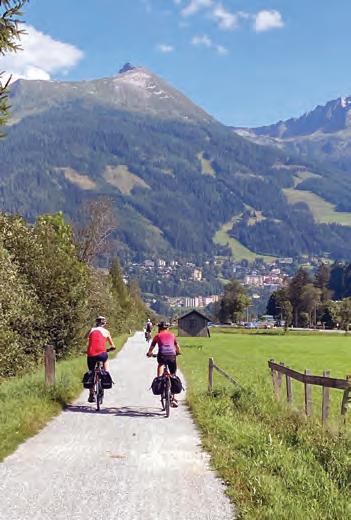
AUSTRIA & ITALY ADVENTURE
Two countries and one of the world’s best cycle paths in the same trip. This jaw-dropping ride follows the famous Alpe-Adria-Radweg trail, an unforgettable route linking the Austrian city of Salzburg to Grado on the Italian coast. The diversity of the area is unparalleled, taking in the dramatic Austrian and Italian alps, clusters of picturesque Carinthian lakes and the sparkling Adriatic, all of which provide an iconic backdrop for this schnitzel and pizza-filled adventure.
In such a mountainous area, the terrain is actually quite manageable and suits the regular immediate cyclist with a sense of adventure. With your kit carried with you in a pannier, it makes for the perfect, sustainable way to take in the wonderful surrounds and experience the local culture.
Eurocycle Adventures is again running this tour from 1-9 August, tying in with Austria ‘s biggest traditional festival, Kirchtag. n eurocycleadventures.com
LONDON CYCLIST Spring 2023 45 TRAVEL ADVERTORIAL
STAY IN A 16TH-CENTURY CHAMBRE D’HOTE
The quiet and picturesque lanes of France are well known as offering some of the best cycling routes in the world. Join a Moulin trip to
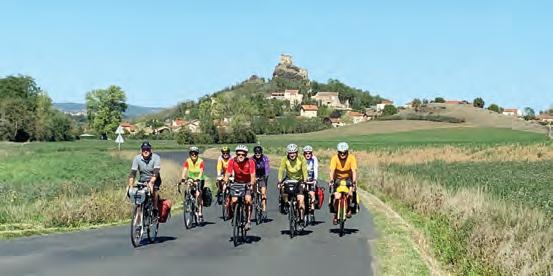
find out why.
Our week-long, fully-inclusive holidays are centred around an exquisite 16th-century chambre d’hote in the peaceful countryside between Poitiers, Niort and La Rochelle. All rooms are en suite, full of character with beams and feature stone walls. Our swimming pool is heated and our food and wine ranks as some of the best you’ll find.
Routes vary in their challenge and will suit all — they are already pre-planned and provided in personal folders with detailed directions, points of interest and maps. Plus you can bring your own bike or hire one of ours. n moulinholidays.com

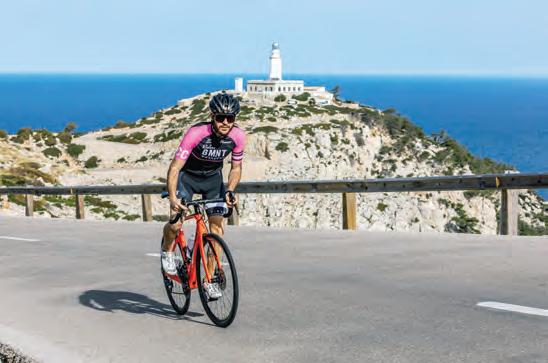
Hoposa Villaconcha is an aparthotel in Puerto Pollensa, Mallorca, with all the services you need for a spectacular holiday by the sea. It’s a place where you can combine your two favourite things: family and sport.
Families can enjoy the four outdoor swimming pools, an extensive entertainment programme and the best facilities for children. Sports enthusiasts have access to a semi-Olympic outdoor swimming pool (heated to 28°C), a large gym, spa, hypoxia chambers, services for cyclists, adapted menus with our a ‘Healthy Pleasures’ seal, and much more.
The 119 rooms of our aparthotel in Puerto Pollensa have been designed so that both families and sports enthusiasts will feel at home during their holidays in Mallorca. Spacious, bright, comfortable apartments and studios, all less than 200m from the beautiful beach. n hoposa.es
FRANCE: TOURING AS IT USED TO BE
Do you ever dream of breezing through quiet French country roads in a small group of like-minded cyclists? Well if you fancy exploring the battlefields of northern France for seven days in June, or perhaps tackling the iconic Manche-to-Med run from Dieppe to Montpellier for 13 days in September, at a pace that covers a decent distance without ever becoming a race, then we have you covered.
Great Bike Rides tours are self-supported, led by an experienced, qualified and convivial guide. Groups cover 30-50 miles per day for the Battlefields tour, and average 60 per day for the Manche-to Med, with a sociable dinner at the end of each day. The price includes almost everything — B&B, picnic lunches, dinners, ferries — and it’s all organised for you. Can there be a better way to travel with your bike? n greatbikerides.co.uk
ADVERTORIAL
SPORTHOTEL VILLACONCHA: FOR FAMILIES & ATHLETES
46


BIKE FROM BOLEYN
Showing there’s a better, greener way to get to major sporting fixtures, Gerard Bailey joins the Bike from Boleyn, which links the former and new homes of West Ham United




BIKE FROM Boleyn (BfB) was set up at the end of the 2015/16 season when Premiership football club West Ham United left the Boleyn Ground after 112 years playing at the east London stadium. Its aim was, and still is, to maintain links between the Upton Park area, WHUFC’s spiritual home, and the new London Stadium in Stratford, at the same time as encouraging a more environmentally-friendly way of travelling to matches — cycling. Twice a season — once towards the start, once towards the end — BfB organises mass rides for fans, local residents and bike enthusiasts alike. Starting at the iconic Champions statue, opposite the equally iconic Boleyn Tavern and a goal kick away from the old
Boleyn Ground, the ride always starts in a carnival atmosphere that is a necessary reminder that a football club is the beating heart of local, working class communities (though everyone is welcome to the ‘club’). The tireless volunteers of Newham Cyclists marshal the rides and make sure everyone gets to the stadium safely. And this season the kindred spirits of the national campaign, Pedal to the Pitch (PTTP), have joined forces with BfB to further promote the idea that cycling is often the easiest, quickest and healthiest way to get to games, for both particpants and the planet.
The most recent ride of the 2022/23 season was for a match against London rivals Fulham. With the support of PTTP who helped publicise the ride on social media platforms and were there to support on the day, the group gathered for an early 11am start. Dr Bike was there, courtesy of the council, to undertake running repairs on anyone whose bike needed a bit of attention, while PTTP generously financed the hire of bikes for those wanting to join who were bikeless. By midday some 30 cyclists saddled up as the local Dhol Musicians supplied their unique accompaniment to send the group on its way. Arnold Ridout of Newham Cyclists was lead marshal and took the group from the statue for the half-mile backstreet stretch to link up with the famous Greenway; this was
48
the only on-road cycling required. The Greenway is a 7.5km stretch of reclaimed land, built on top of the old Victorian sewers, running from Beckton in the east to within a couple of hundred yards of Victoria Park, Hackney.
From where the ride joins the Greenway, near the back of Newham General Hospital, it is then just a lovely 4km to the London Stadium. As riders head north along the regenerated path you pass an urban gardens development, open to all, but especially geared towards encouraging city kids to get to know more about the natural world in their own backyard.
Discover local history
For the first kilometre or so, the ride is in short bursts of a few hundred metres each, as the Greenway crosses a series of main and minor roads. Once over Upper Road in Plaistow, however, a longer section lets the group progress unimpeded as you pass the West Ham Memorial
Grounds. Most evident are the rugby posts on pitches of East London Rugby Club, whose home this is, but the real sporting story for this ride is that this is one of the earliest homes of the Hammers, who played their matches for a short period here before moving a mile or so east to the Boleyn. There is a monument to this piece of history here: Theresa Smith’s industrial sculpture has 11 iron posts, representing a team of 11 Thames iron workers (West Ham United was formed out of Thames Iron Works, under whose very name they first played and ‘the Irons’ is still the club’s preferred nickname for longtime fans). The posts also represent the shape of a ship’s hull to commemorate, at the same time, the 37 lives lost when HMS Albion was launched from the Works and a viewing platform collapsed causing them to drown.
A short while later a reminder of what we are cycling over, emerges on the left: the Abbey Mills Pumping Station. ‘The Cathedral
of Sewage’, as it’s often called, was designed by Joseph Bazalgette and is a stunning example of Byzantine style architecture, and a rather incongruous, if glorious, sight in an otherwise fairly nondescript environment.
The final leg took the group past more industrial sculptures, a legacy from the 2012 Olympics, with the ArcelorMittal Orbit on the skyline. A final zigzag on the edge of the Olympic Park and you reach the View Tube, where bikes are parked, refreshments taken and the hopes of football fans are put to the test again. And in a ‘mixed’ season, this time it was worth it — West Ham won, making the return ride feel like it was ‘downhill’ all the way.
STAY IN TOUCH
Find out about the next Bike from Boleyn by following the group on social media. Likewise you can learn more about Pedal to the Pitch and its ‘fixture list’ of rides at pedaltothepitch.co.uk.

LONDON CYCLIST Spring 2023 49 TRAVEL COMMUNITY
Photos: Hamish Laing
Take on RideLondon with Team LCC


28thSundayMay
2023

Enjoy closed roads and an incredible 100 mile route alongside thousands of fellow cyclists and help raise vital funds for LCC.
£40 fee which includes a Bioracer jersey

lcc.org.uk/ridelondon

Ride Guide

RIDES
BIKES ADVICE PRODUCTS


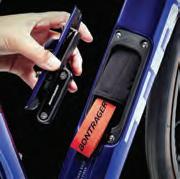

LONDON CYCLIST Spring 2023 51
RIDES | ADVICE | BIKES | PRODUCTS | CULTURE | SW LONDON 53 GRAVEL TYRES 60 BIKE BUYING 56 SPORTY E-BIKE 58
|
Photo: Daniel Newman
Cycle Buddies
HELPING YOU TO CYCLE MORE
Want some help to cycle more? Would you like to build your confidence riding on London’s roads or find safe routes to school or work? Or do you cycle already and want to help others experience the joy and freedom of getting about by bike?
Cycle Buddies puts new and returning riders in touch with experienced riders in their local area. Meet up and ride together – to work, to the shops, or just to the park for practice!
Sign up at: www.lcc.org.uk/cyclebuddies
Regular ride guide Charlie Codrington heads west beyond the city fringes to discover the sort of quiet trails and hidden history that Londoners love
HIDDEN BEYOND the suburban sprawl of Surbiton is a surprisingly well-connected network of gravel paths that are easily accessible from all parts of the city — it’s an area just waiting to be explored.
Have you ever wondered in which stream John Millais painted Ophelia? Why does Epsom have salts? What are those strange white-painted cast iron posts you see dotted in woods around the capital? And what is a massive horse’s head doing on a Surrey hillside?
Follow this ride from Kingston station and you’ll uncover a few answers. There’s a few hills, though nothing severe and the route’s suitable for all types of bikes, including hybrids. It can be busy in parts, especially at the start of the Barge Walk at Hampton Court, and there are few places you may have to get off and walk, but it’s a loop that can be ridden all year round and makes a wonderful day out whatever the season.
SOUTH-WEST WILDS OF THE
FACTFILE
DISTANCE: 37km (23 miles)
ASCENT: 170m

BIKE TYPES: suitable for all bikes, 60% off-road.
PIT STOPS: Kingston, Claygate, East Molesey.
NB: Komoot shows parts of this route as ‘not permitted’ for cycling, but these are shared use paths on the ground.
We have partnered with mapping specialist Komoot to bring you free downloadable route maps. Simply scan the QR code here to access the relevant page on your smartphone or tablet.

LONDON CYCLIST Spring 2023 53 RIDES
Photo: Gilder Kate/Flickr
In association with
KINGSTON STATION KINGSTON STATION EPSOM WELL 15.5km 5
HAMPTON
km SIX
6km
WILDS
OF THE SOUTH-WEST
2 3 4
COURT
ACRE MEADOW
HORSE OF THE SOUTH 23.5km
Ride Guide
S/F: Follow the bike route from Kingston station, through the town, to join cycle route 75 towards Surbiton, and within a couple of miles you’ll be thinking you’ve escaped to the countryside as you ride by the peaceful banks of the Hogs Mill stream.
The illusion is shattered briefly as you meet the noisy A3, which fortunately you cross via the underpass and you’re soon back in the peace and quiet of the Long Meadow nature reserve. If you’re lucky you may spot an iridescent flash of a kingfisher, though it is much easier to spot the wooden carved squirrel.
2 SIX ACRE MEADOW
Once you’ve passed under the railway line, you cross the Hogs Mill on a wooden bridge and ride through Six Acre Meadow. Art lovers stay alert, for it’s along this stretch of the brook that Pre-Raphaelite artist Sir John Millais painted Ophelia in her watery grave. Elizabeth Siddal, Millais’s model for Ophelia never actually posed in the river, apparently, the river and flora were painted first with the model added later. For the sake of authenticity she posed in a cold bath, catching a severe cold; Millais was presented with a doctor’s bill for £50.
Use the lights to cross the busy Kingston Road, rejoin the Hogs Mill, and after a mile or so the route turns sharp left up to the Horton Park golf clubhouse. Go through the car park aiming for the left side of the clubhouse where a passage leads to a bridleway across the course.
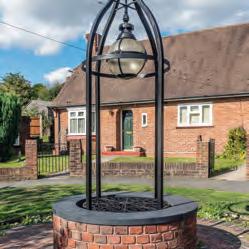
3 EPSOM WELL/EPSOM SALTS
You’re off-road now for the next 5.5km on beautifully-prepared gravel tracks leading to the source of Epsom Salts. These bitter-tasting magnesium
WILDS OF THE SOUTH-WEST
sulfate salts were, so local legend goes, discovered during a drought in the 1700s by a local cowherd looking for water. He came across a pond from which his cattle wouldn’t drink when he realised the water cured cuts on his cows — one of England’s earliest spa towns was born. Nothing remains of the pond today, only a replica of a wishing well and an info board. Backtracking to the main route you may notice a white cast iron post with the Corporation of London arms picked out in red. There are over 200 of these coal tax boundary posts strung around London, remnants from when a tax was levied on all coal imported into the City. You’ll notice such posts at the junction of even the smallest path for the next few kms.
4 HORSE OF THE SOUTH
Cross another busy Kingston Road and there’s a gentle rise before a glorious steady downhill section through the Prince’s Covert’s wood on a wide fire track. Ride straight across Fairoak Lane, turn sharp left and shortly you cannot miss Nic Fiddian-Green’s monumental horse head sculpture, ‘Horse of the South’, Surrey’s response to Antony Gormley’s Angel of the North.
Cross the old Portsmouth Road and follow the road all the way to the Thames. There’s lots of lovely coffee shops on Molesey’s Bridge Road on the south side of the Thames at Hampton Court.
5 HAMPTON COURT
Hampton Court is justifiably famous for its Tudor palace, Henry VIII’s real tennis court, some ghosts and, of

FIND, PLAN AND SHARE YOUR ADVENTURES WITH KOMOOT
Turn your next ride into an adventure with Komoot. Get inspired by tapping into shared community knowledge and recommendations, then bring your own adventures to life with the easy route planner.
New users can receive a Komoot Region Bundle of offline maps (worth £8.99). Visit komoot.com/g and enter the code ‘LCC’ to choose your free Region Bundle.’ [Valid for new Komoot users only, redeemable until 31/1/2024].
course the maze. However, on this ride you’ll discover the later baroque palace built by Christopher Wren for William and Mary. Turn onto the Barge Walk, but don’t hurry, stop and take in the facade of the Tudor palace before riding on to reach the recently restored glitzy Jean Tijou gates with their shining gilt detail. Peer through the railings at the immaculate Privy Garden with its sharply-shaped formal hedges and trees overlooked by Wren’s palace. Continue along the Barge Walk next to the Thames and, as the crowds thin, look out for a left turn and go through some gates into the normally deserted Home Park. The route takes you across the end of the Long Water, a gorgeous canal, lined with avenues perfectly framing another facade of William and Mary’s Hampton Court Palace. In our opinion this is perhaps London’s most underrated view and a grand finale to this extraordinary ride.
54
Photos: Ian Capper, Daniel Newman
WILDS OF THE SOUTH-WEST

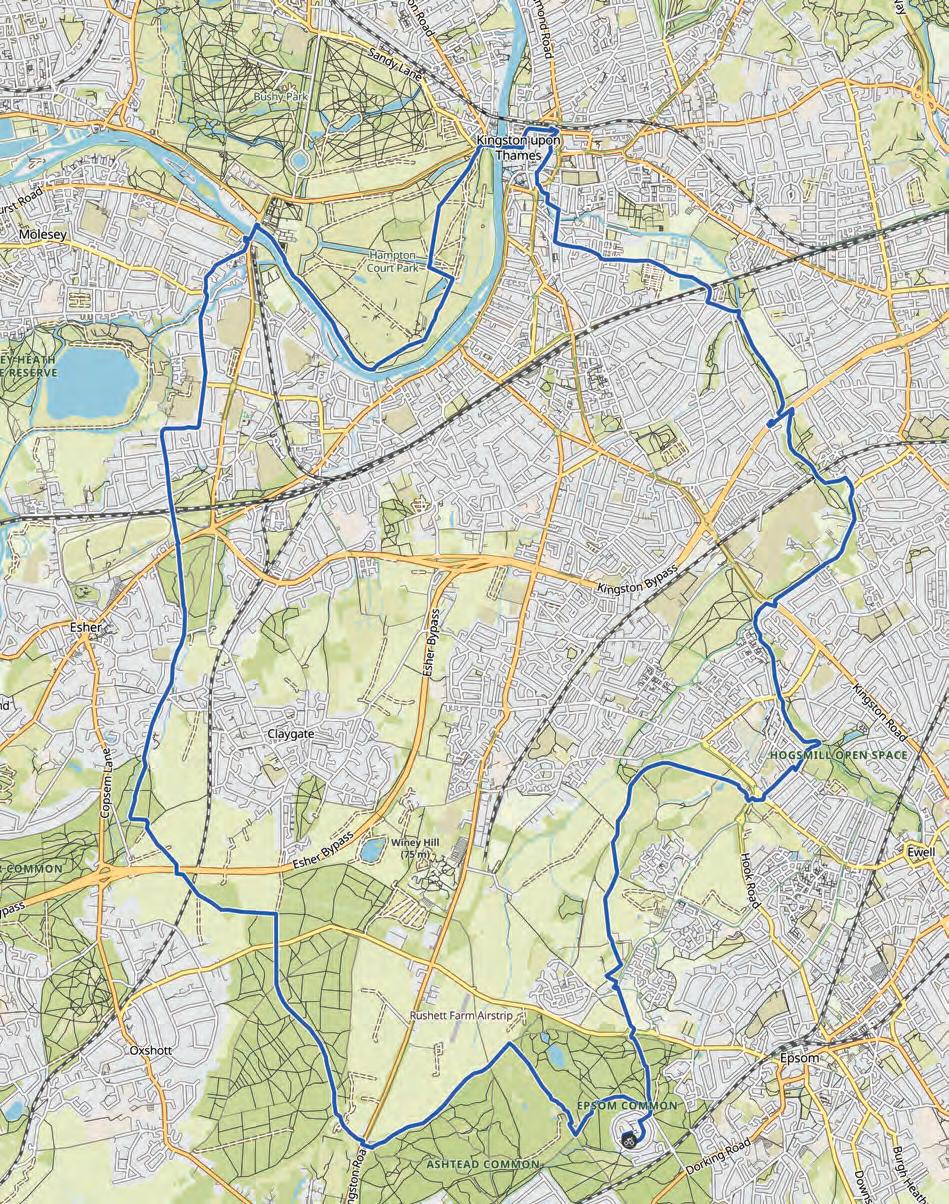
scan the QR code here to access the relevant ride guide and map on a smartphone or tablet. LONDON CYCLIST Spring 2023 55 In association with
Simply
3 2 4 5 CUT-OUT AND KEEP
S F
MY FIRST... SPORTIVE BIKE
In the world of drop-barred bicycles, sportive bikes — also called endurance road bikes — sit between out-and-out road racers and more off-road capable gravel machines, borrowing ideas from both camps. Still fast and lightweight, the focus is on offering a tad more comfort for long days out. If you plan a lot of big events or charity challenges, then this is the sort of bike for you...
While there’s myriad options in aluminium, steel and titanium, the majority of sportive bikes tend to be carbon. Not least because frame weights tend to be 1lb to 2lb lighter, and those pounds become very noticeable on super hilly courses like the Fred Whitton Challenge or L’Etape du Tour. There’s several key differences compared to pure-bred race bikes. Sportive bikes are less ‘aero’; tube profiles/
frame designs are less concerned with battling wind resistance and more focussed on (relative) comfort. Geometry is tweaked too, with shorter toptubes for a slightly more upright, relaxed riding position, and head angles are a tad slacker for improved steering control. Finally there’s clearance for wider tyres which help smooth out those
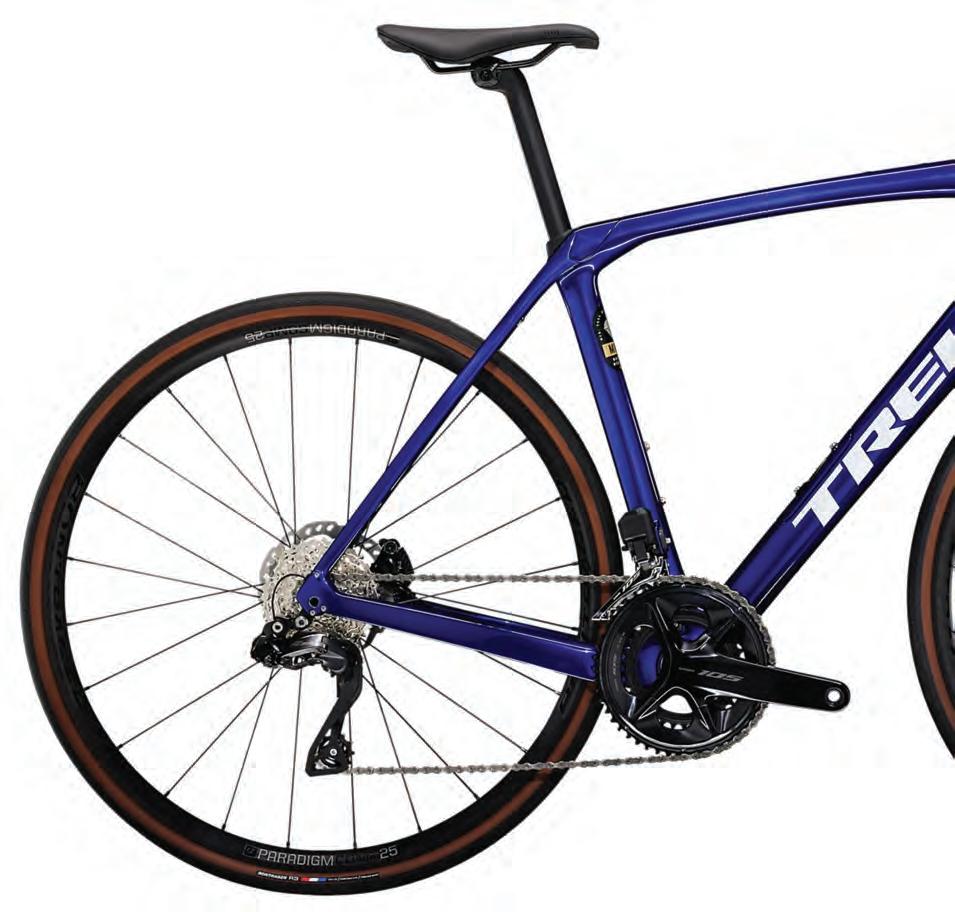
Hidden tech: several brands offer clever solutions to make your ride comfier (here it’s called IsoSpeed)
Big rides, lots of gears: most sportive bikes now will have a 50/34t chainset paired with 11-28t or 11-32t cassette.
56
H FOR MORE BIKE ADVICE & TOP TIPS, GO TO LCC.ORG.UK/NEWS-AND-ADVICE H
1. FRAME
1
5 4
8
3
9
2 3 5
rough roads — not gravel bike clearance, but enough for 28-32mm tyres, or more (the Trek Domane pictured has room for 38mm tyres).
2. COMFORT
Many brands look for added solutions to the constant jarring your body gets doing 100-milers: sometimes you’ll find ‘dropped’ seatstays or flattened chainstays to absord bumps. But a few brands try to isolate the rider further. Here Trek’s IsoSpeed tech ‘decouples’ the seatpost to offer a few degrees of vertical flex.
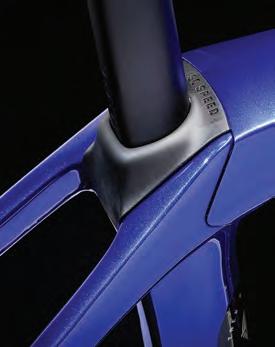
3. MOUNTS/BOSSES
If you’re going to be riding all day, with long gaps between feed stops or cafés, then you’ll need plenty of
hydration. So look for at least two sets of waterbottle mounts. You’ll likely also want to use a toptube bag for energy bars/gels/snacks.
4. TYRES
Tyre choice will be dictated by frame clearance and the sort of course you’ll be riding, but generally a 28-32mm wide tyre will offer both speed and all-day comfort. But we’d always recommend going wider for extra cushioning, or grip on poorly maintained surfaces.
5. GEARS
A good spread of gears is key, not only to maintain a steady cadence when smashing out those long, flat sections, but also to help you up the inevitable climbs. A double chainset up front is most common these days, paired to a 11-28t or 11-32t cassette (some pros go even bigger for particularly hilly stages).
6. DISC BRAKES
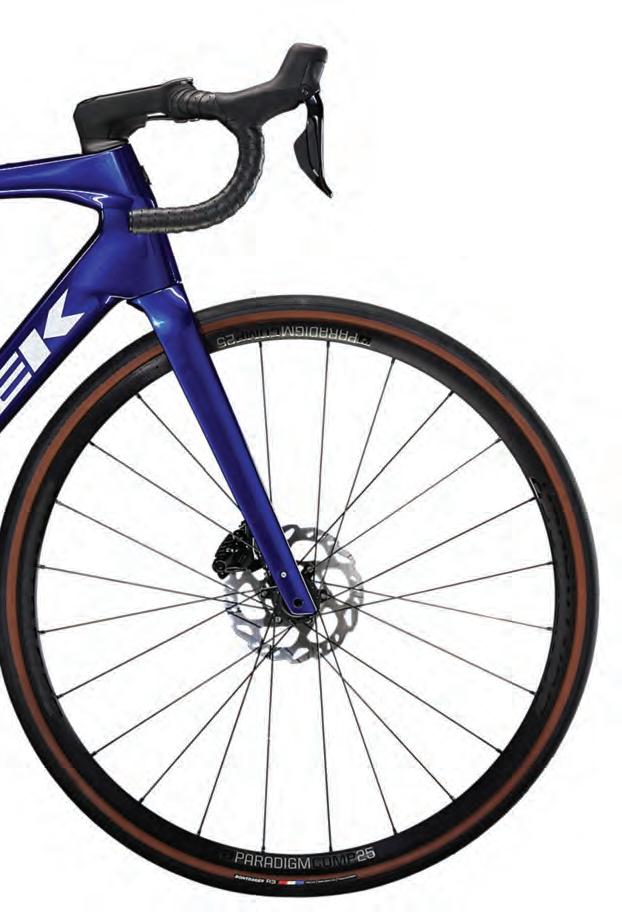
Some traditionalists will always favour caliper brakes, but for the rest of us disc brakes are king. Offering unrivalled stopping power and less maintenace, they are a godsend on
long alpine-like descents and in wet/greasy conditions.
7. HANDLEBARS
Again comfort is key, so bars are often slightly wider than pure racers (to open up the shoulders) and have flat sections on the tops to rest your hands on. Adding gel pads under your bar tape later is another top tip to reduce jarring on your arms.
8. SADDLE
If you’re exceptionally lucky a new bike might come with your perfect saddle. But it might take some time to find one that works for you. Get advice in a shop or from friends, try a few where possible (on shorter rides first), and then pair with nicely padded bib shorts for the big day.
9. STORAGE
While jacket, phone and wallet are perhaps best carried in a rear jersey pocket, your spares (inner tube, tyre levers, puncture kit, mini-tool and inflator/pump) are best carried in a small saddlepack. Unless your bike has a flashy built-in storage compartment like this Trek!

10. COMPUTER
A bar-mounted computer is super useful for counting the miles, following a set course and gauging performance.
H FOR MORE BIKE ADVICE & TOP TIPS, GO TO LCC.ORG.UK/NEWS-AND-ADVICE H
7 10
2 6 10 ADVICE
NEW E-BIKES HOT TECH
MOST ‘MID-DRIVE’ e-bikes


— where the motor is located at the bottom bracket — are powered by pretty hefty motors from the ‘big four’ of Bosch, Brose, Shimano and Yamaha (though Bafang is also making an impression). Not only do they supply a real pedal-assist punch, but they are also, unsurprisingly, heavy. Enter Specialized’s own SL1.1 mid-drive design — actually developed in partnership with automotive engineers Mahle — with a stated motor weight of just 1.95kg. To put that into context, most Bosch mid-drives sit at around the 3kg (6.6lb) mark.
The SL1.1 motor doesn’t claim the same hillclimbing torque as the
bigger motors (though its 30Nm puts it in the same ballpark as Bosch’s much heavier, entry-level Active Line). But being a lighter, more discreet unit it’s perfectly suited to sportier e-bikes like the Turbo Vado SL range. Fully kitted out, this commuter weighs only 17kg. And that is hugely noticeable
when riding and also when lifting the bike up steps or over obstacles.
The clean, minimalist lines almost disguise the excellent hardwired LED lighting, plus you get a kickstand, full-length mudguards and rear rack included. The only real downside in practical terms is that the 320Wh battery is only removable in a workshop and not intended to be taken out for daily charging. Everything looks sleek but functional, from the simple toptube battery capacity display and small handlebar-mounted power level buttons, to the neat rack/mudguard integration.
On the road the Vado SL’s power delivery is very impressive — super smooth and quiet in lower levels
58
Review: Richard Peace
A fully-equipped, high quality, more budget-friendly performer from Specialized’s superlight range of e-bikes
SPECIALIZED TURBO VADO SL 4.0 EQ n £2,900 n specialized.com BIKES
and only a little more audible up steep inclines; this is where it excels, despite the relatively low torque rating. Pedal assistance is nigh-on instantaneous and the three power modes well graduated; the bike is even acceptably free running on the flat without the motor engaged.

Despite its smaller battery capacity, range shouldn’t be an issue for most commuters or recreational riders — we managed more than 30 miles in windy, hilly conditions making it very economical in its consumption. There’s also an optional extra 160Wh ‘range extender’ that you could use for longer distance touring or multi-day trips.
A SRAM 11-speed drivetrain, with


a very welcome 42-tooth ‘granny ring’ meant naughty gradients were never an issue, while Tektro hydraulic disc brakes gave oodles of control on the way back down. There’s plenty of headset spacers to raise/lower the bar height too.
In short, the Vado SL’s a pleasure to ride. The pedal assistance is subtle, so you feel like you’re still in control rather than the electronics.
VERDICT
FACTFILE
n Useful rear rack rated at 15kg, but looks like it should safely carry quite a bit more.
n Use of the associated app is not vital but adds functionality: power delivery parameters, mapping, and counting battery charge cycles (Specialized guarantees it to 75% capacity after 300 charge cycles, or alternatively, 75% after two years).
+ If you like riding sporty non-electric bikes you’ll doubtless love the riding characteristics of the SL1.1 mid-drive motor on this e-bike — it gives you some assistance but it still feels like you are really powering the bike.
+ Full equipment spec and super efficiency make it a great long haul bike for commuting and touring, though a non-removable battery does mean that you’ll need a charging point near your bike storage.
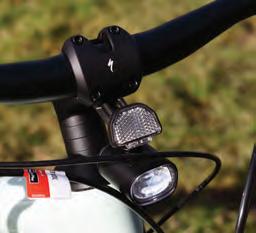

LONDON CYCLIST Spring 2023 59 REVIEWS
GRAVEL TYRES
The combination of light weight, fast rolling and all-weather performance makes the latest gravel tyres a solid pick for on and off-road adventures
FEW OF US ride solely on the road — it’s common for sections of towpath, riverside trail, woodland track or broken byway to feature on many commutes, let alone our weekend explorations. And while bombproof ‘touring’ treads like Schwalbe’s Marathon Plus can cope with most eventualities, they’re undeniably heavy — often 1lb (440g) more per tyre than those featured here — and considerably slower than performance rubber. Hence the growing popularity of this relatively new category of all-round ‘gravel’ tyres.
The label might hint at pure off-road use, but these tyres are designed with low-profile central tread patterns for speed on the hardpack, and improved grip in wet or sub-optimal conditions. They’re well armoured too (see below).
#1 CONTINENTAL TERRA TRAIL
n Sizes: 700x35, 700x40, 700x45 (tested), 650Bx47
n Weight: 535g
So new that the website hadn’t been updated as we went to press, the new Terra Trails in 45c width come with Shieldwall casing protection and are tubeless ready if you want to ditch the inner tubes. The hexagon-shaped knobbles are wider spaced than others here, which meant they proved the most assured on the muddy sections of the Thames Path this winter. Also in a brown sidewall option (495g).
n conti-tyres.co.uk; £42.45
#2 HALO RXR ROAD PLUS
n Sizes: 700x35, 650Bx47 (tested)
n Weight: 525g
The RXR’s minimalist design belies its abilities: it’s super nippy on the road, while it surpassed expectations on wet surfaces and gravelly parkland shortcuts. Get the pressure right and we found easier trails are more than feasible too. As a nice bonus, each tyre comes with free frame strap.
n ison-distribution.co.uk; £59.99

#3 KENDA FLINTRIDGE PRO
n Sizes: 700x35, 700x40 (tested)
n Weight: 500g
With a smooth centreline and small, tightly-packed knobbles, the Flintridge felt fast and most at home on broken roads and in the dry; mud was not its forte. The shoulder knobs held up well in aggressive turns though. Reflective sidewall patches are a great addition.
n moorelarge.co.uk; £55
#4 PANARACER GRAVELKING SLICK+

n Sizes: 700x32, 700x35, 700x38 (tested), 27.5x 1.5, 27.5x1.75, 27.5 x 1.9
n Weight: 360g
Available in two sidewall colours, this has been Panaracer’s best do-it-all tyre for years. It looks and rides like a slick, with only a slight chevron tread visible on close-up, but the excellent puncture proofing means it can still handle rough stuff; dozens of Downs Link rides and still no flats. Good as either a winter ‘training’ tyre or for burlier sportives. n panaracer.co.uk; £54.99
#5 PIRELLI CINTURATO GRAVEL
H
n Sizes: 700x35, 700x40 (tested), 700x45, 650Bx45
n Weight: 480g
The H is the probably the most versatile of Pirelli’s 10-strong gravel tyre line-up, with its low, tightly-spaced knobs ideal on road and hardpack trails. Zero issues on flinty paths (albeit set up tubeless), we also found it to be one of the grippier compounds across the board. n extrauk.co.uk; £57.99
#6 SCHWALBE G-ONE OVERLAND
n Sizes: 700x40, 700x45 (tested), 700x50
n Weight: 570g
Billed as “the gravel tyre for commuters, adventurers and e-bikers”, this really did hit the all-round sweet spot for us. Quick rolling on roads/hardpack, stable in corners thanks to those edge blocks, and highly durable. Like a modern take on a touring tyre — at half the weight. n schwalbe.com; £64.99
60
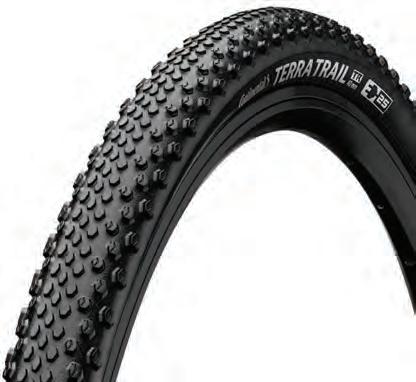


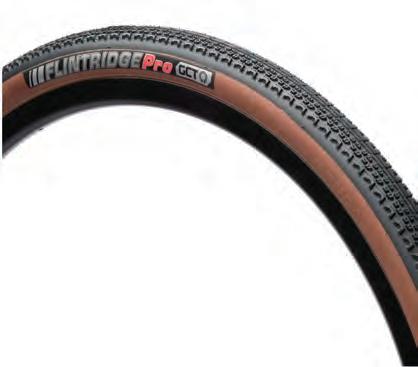

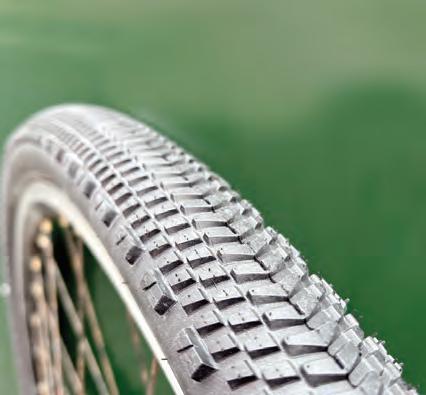
LONDON CYCLIST Spring 2023 61 REVIEWS
#1 #2
#3 #4
#5 #6
HELMET LIGHTS
Helmet lights don’t just make you more visible, they add extra illumination on dark paths, especially around dark corners, and shine at road/trailside repairs

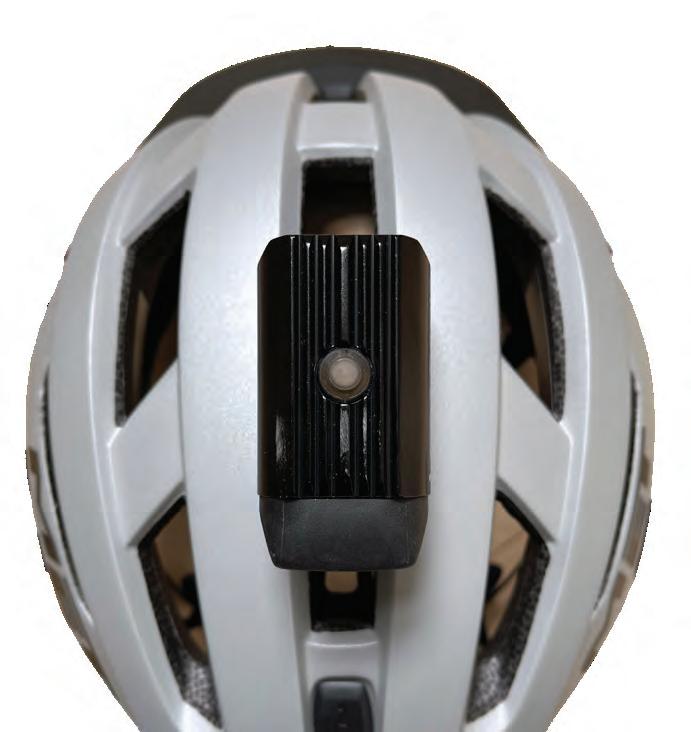
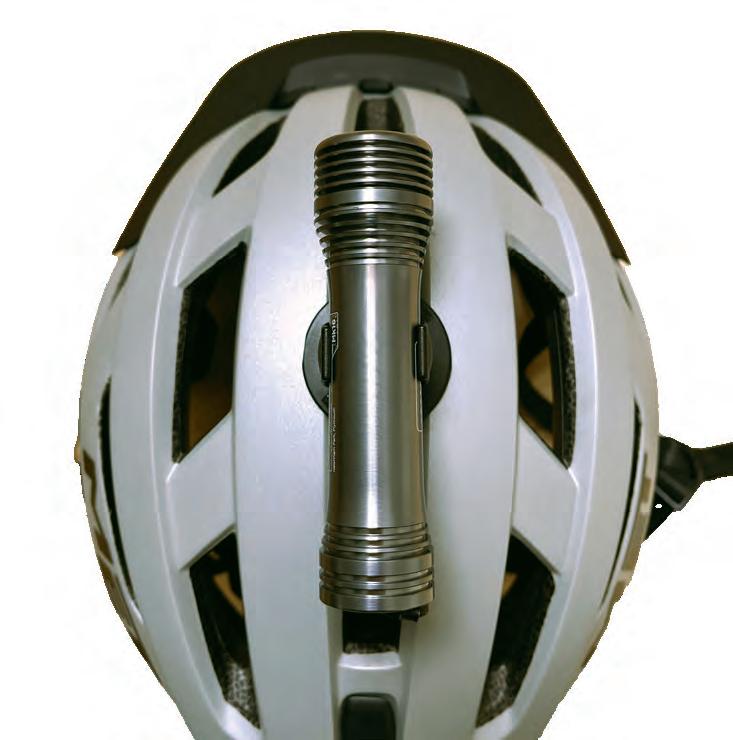
THEY MIGHT LOOK odd to some people, but we’re long-time fans of helmet lights at London Cyclist, for both urban and off-road use. They’re just so handy when you want to look off the side of the road or trail, picking out potential hazards that your main lights don’t, and when you need both hands to fix a night-time mechanical or read a map. They fit most vented helmets and are so light than you don’t notice you’re wearing them.
NB : the images here make the lights look huge, but they’re actually only 7-12cm long.

#1 CATEYE AMPP 800
n Run time (claimed, high): 1.5hr
allows the beam to be set at different angles. The light unit’s aluminium body is really robust and has long cutouts for excellent side visibility. On the 800-lumen main mode we didn’t get the claimed run times, but surpassed the middle setting’s claimed 2hr (400l) around town on several occasions. £64.99; cateye.com
EXPOSURE JOYSTICK
Run time (claimed, high): 1.5hr
Run time (claimed, flashing): 36hr
Charge time (claimed): 4hr
Shaped like a mini torch, the Joystick’s into its 16th iteration since 1990, now pumping out 1150 lumens in brightest mode, with a dense, focussed beam that lights up wooded trails a treat. Aimed primarily at gravel riders or mountain bikers, the Joystick offers plenty for roadies too, even if the array of modes may seem bewildering. Smart
tech allows you to choose your run time (or lumen output) and we settle mid pack in the city. You really don’t get caught short, thanks in part to the best battery indicator in the business.
n £155; exposure-use.com
#3 LEZYNE HECTO
DRIVE 500XL
n Run time (claimed, high): 1hr
n Run time (claimed, flashing): 13.5hr
n Charge time (claimed): 2.5hr
n Weight: 85g
Lezyne uses a hassle-free Velcro strap, with a GoPro-style mount to make swapping between light and camera a doddle. We’ve also had success attaching the bar version of the 500XL (with rubber strap) direct to Bell and Giro helmets where the vent spacing allows for a bombproof fit. The light itself has a rubber bung protecting the USB stick, small cutouts for side visibility, and eight beam modes. We got a good hour on ‘blast’, used just on the darkest paths, and a whole week’s worth of rides on flashing; it’s so compact we take it with us most days. n £50; upgradebikes.co.uk
REVIEWS
#2
#3
#1
Test rides, expert advice from cargo bike manufacturers and retailers, cargo bike-powered food, drinks and entertainment, plus lots more…
01 APRIL 2023
GUILDHALL YARD, LONDON, EC2V 7HH
The London Cargo Bike Festival is a family focussed day designed to educate and inform on the wide range of cargo bikes, service and maintenance offers as well as training and safety.

WWW.CARGOBIKEFESTIVAL.UK

Sponsored by:




Supported by:




50 FREE PLACES FOR LCC READERS!
PROMO CODE: LCCFEST

TOSAVEUP £30!
QUOTE
BOOKS & FILMS
THE CYCLING BIBLE
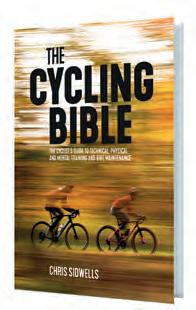
Chris Sidwells adventurebooks.com; £25
Author Sidwells is a wellknown name in cycling media, having penned more than two dozen books over the last couple of decades. Some of these have focussed on pro riders and races, others on maintenance, fitness, even famous jerseys. This new compendium is a handy guide to the basics of the sport, across all disciplines, and distils the best advice on skills, technique and training to ensure you get the most out of your saddle time.
While intro chapters on bike buying and finding your optimum fit will be of interest to new riders, later sections on creating training plans and the psychology of performance are refreshingly accessible and never too dense, and will particularly appeal to those looking to try challenging sportive events. Likewise the strength and conditioning pages are full of tips that will benefit every cyclist, regardless of age or ability.
FIFTY MILES WIDE
JulianSayarer arcadiabooks.co.uk; £9.99
Long-time London Cyclist readers might remember us interviewing Sayarer back in 2009 after he’d broken the 18,000-mile world record for a circumnavigation by bicycle. Since then he’s written a handful of books and this, the most recent, sees him embarking on a tour through Israel and Palestine, and recounting the exchanges with those he meets. And he elicits fascinating tales, perhaps in part due to his chosen mode of transport; a guy on a bike is viewed as “innocent” almost, disarming people of any suspicion.

It’s not always an easy ride, there’s confrontation and, occasionally, dicey situations to be navigated, but it’s the people, their tenderness and commonalities that shine and leave the deepest impression. From Bedouins to cycling clubs, even a hip-hop artist, a spirit of hope is clearly evident. “You cannot silence a story,” he writes.
BANFF MOUNTAIN FILM FESTIVAL 2023 TOUR
Various banff-uk.com; from £13
Among the proliferation of adventure film fests, Banff stands out as it does things a bit differently, offering two collections annually (‘red’ and ‘blue’), and often screened at cool venues like Union Chapel. Each night mixes three or four shorts, with a similar number of longer festival edits: snowsports, climbing, kayaking and highlining made the cut this year, alongside several bike-related movies.
On ‘red’ night the soulful The Nine Wheels meets a cycle-mad family who take their life on the road after their mum becomes disabled. Bridge Boys is not to be missed either, with the biggest audience reaction by far.
‘Blue’ night offers Colours of Mexico, five minutes of nail-biting riding by Kilian Bron; North Shore Betty, about a mountain-biking Canadian mother; and Danny MacAskill’s lovely Do A Wheelie. Get tickets now...
100 GREATEST CYCLING CLIMBS OF SPAIN
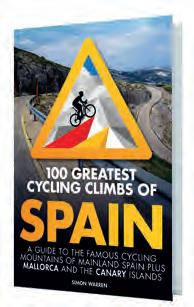
Simon Warren adventurebooks.com; £14.95
Seems like only yesterday that Warren released his first pocket-sized ‘100 Climbs’ guide, but the series is actually 13 years old and this Spanish special is the 13th off the press. Having covered all the UK regions, plus the most famous ascents of the Tour de France and Giro d’Italia, collating the best Vuelta a España hills and beyond (there’s sections on Mallorca and the Canary Islands) was the obvious next step. We’re glad to say the format hasn’t changed much over the years either: each climb gets a spread (full page image, route description, mini-factfile, map and gradient profile), and the author’s rating out of ten.
Diehard roadies will be glad to see Sa Calobra (6/10) and Puig Major (5/10) here, but the brutal Alto de l’Angliro (10/10) also has to be summited for a full ticklist; hopefully another app will follow as well. This is serious Lycra inspiration!

64 REVIEWS
REVIEWS: John K, Jon Collard




Pedersen tandem
WHILE THE LATIN-derived word ‘tandem’ has come to mean two people or pieces of equipment that work together to achieve a result, from late Victoran times it was applied more specifically in the cycling world. Here it became common parlance for a bicycle made for two people who sit one behind the other.
Patents relating to tandems began emerging in the mid 1880s, but just before the turn of the century Mikael Pedersen developed a two-person version of his unique eponymous cycle. Unusually, the first thing Pedersen had designed was the hammock-style saddle, the idea being that it isolated the rider from road imperfections, while at the same time weighing a fraction of the hefty traditional leather and steel spring saddles of the day — in essence it offered a rudimentary form of suspension. Next came the frame, comprising a number of thin tubes and inspired by the truss of a bridge; initially lacking any seat height adjustment, this meant eight different sizes were manufactured at one stage. Obviously, without a normal headtube, there was no way to attach a fork, so an entirely new

design had to be created there too — using similarly thin tubes as the main frame, this elongated ‘double braced’ unit was fitted to the frame via dual bearing points.
By the 1920s, 30,000 models had been produced by the Dursley Pedersen Cycle Company, mainly in the Gloucestershire town of Dursley, but the design never really caught on. It wasn’t until the post-war boom in cycle touring that anyone revisited Pedersen’s innovative template and a handful of frame-building fans across the globe still offer updated, modern takes on the Dane’s original.
In the UK the Tandem Club was founded in 1971, as new tandems came on to the market from the French companies Lejeune and Gitane, though they were still considered niche products. Arguably the most famous tandem sighting then — one that probably took years to live down — was in Carry On Camping, ridden by Terry Scott and Betty Marsden.
People are more familiar with tandems now, however, with dedicated track categories at the Paralympics and ‘child-back tandems’ (adult pilot, child stoker) seen on the school run. All a far cry from the ‘Daisy Bell’ of Harry Dacre’s famous old ditty.
66 ICONIC BIKES
“You’ll look sweet upon the seat of a bicycle built for two,” goes the old song. But John Kitchiner looks at where the idea for tandems originated
Illustration : David Sparshott
1898 ONWARDS

OXFORD BIKE WORKS
A BIKE FOR LIFE, A BIKE FOR YOUR LIFESTYLE
Built here in our workshop in the UK
THE MODEL 1 CARGO
• 60kg carrying capacity so that’s the weekly shop taken care of
• Our no-nonsense low-tech brakes, transmission and steel frame mean we can offer the best guarantees in the business
• All bikes are sold with a full fitting - either virtual, or in person at our Oxfordshire studio
• If you want dynamo lights, kickstands, special tyres, fancy frame colour or something unusual, no problem
• Prices starting at £1699
OXFORD BIKE WORKS CARGO PANNIERS

Can carry 15kg each
• Sturdy, waterproof, shock absorbing and they don’t sag when half full
• Proven Rixen and Kaul fixings
• Lockable
• Light mounts
• £64 each
For more details, test ride or fitting call 01235 831992 Where to find us: Station Yard, Steventon, Oxfordshire. OX13 6RX (Near Didcot Parkway)
www.oxfordbikeworks.co.uk
Bike Pictured: Model 1 Cargo (Custom Step-through) Panniers: OBW Cargo Panniers

















































































































































































































